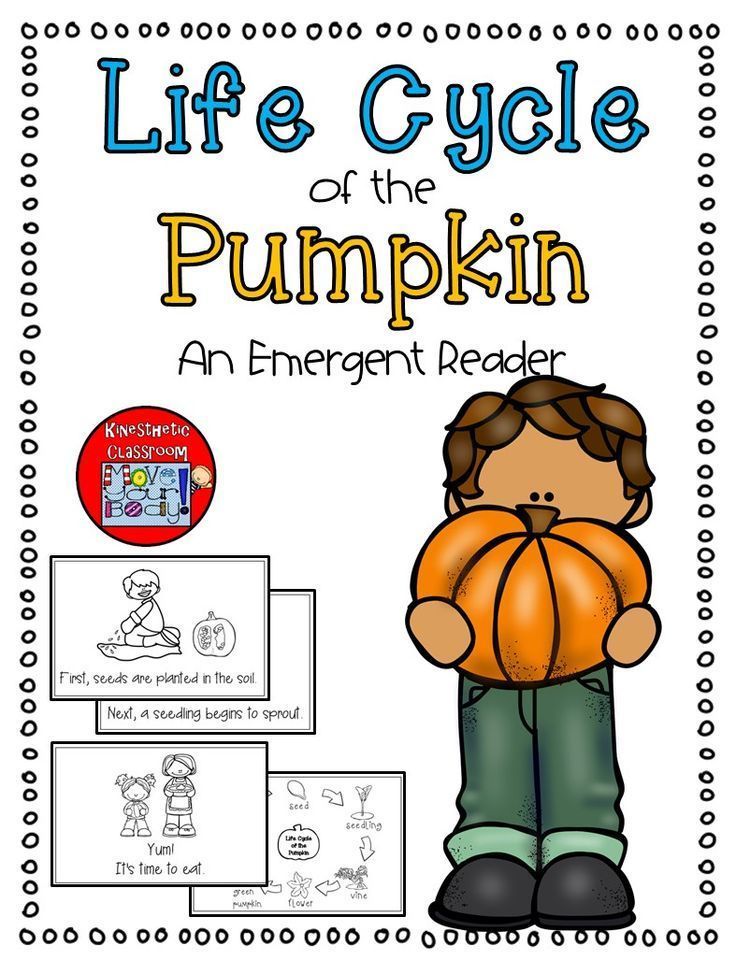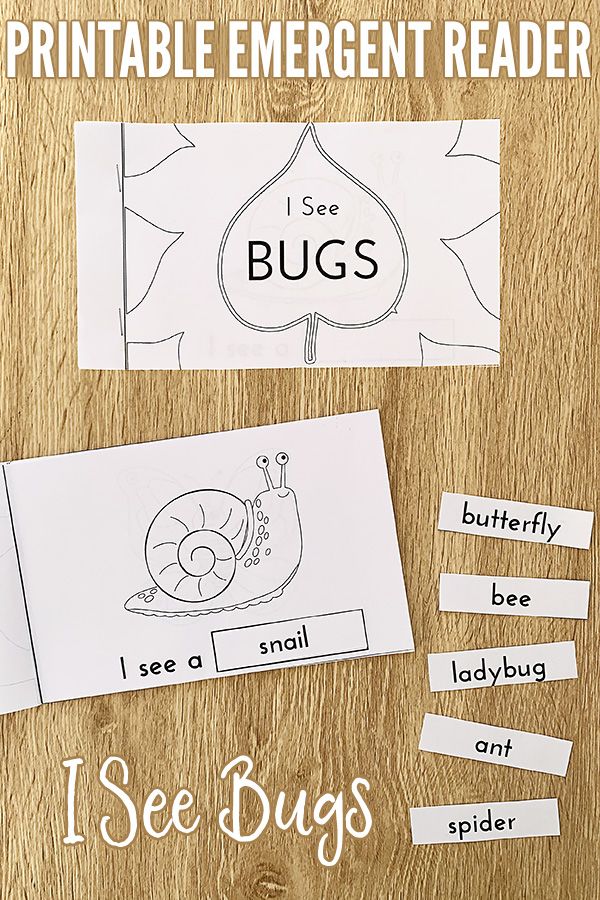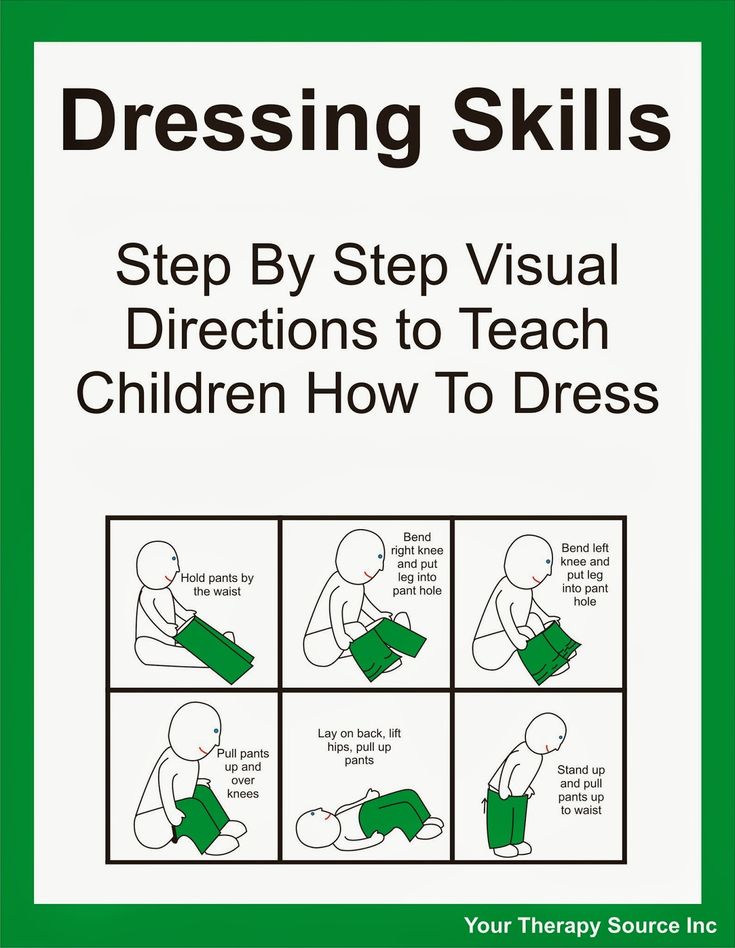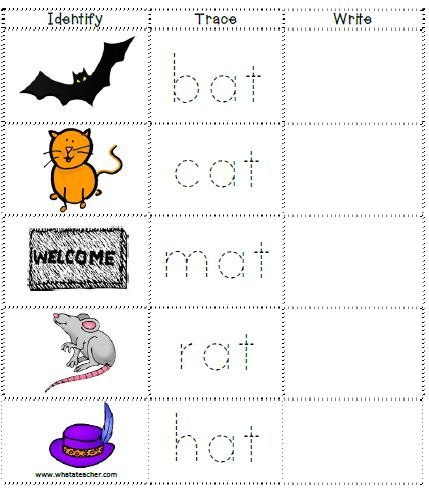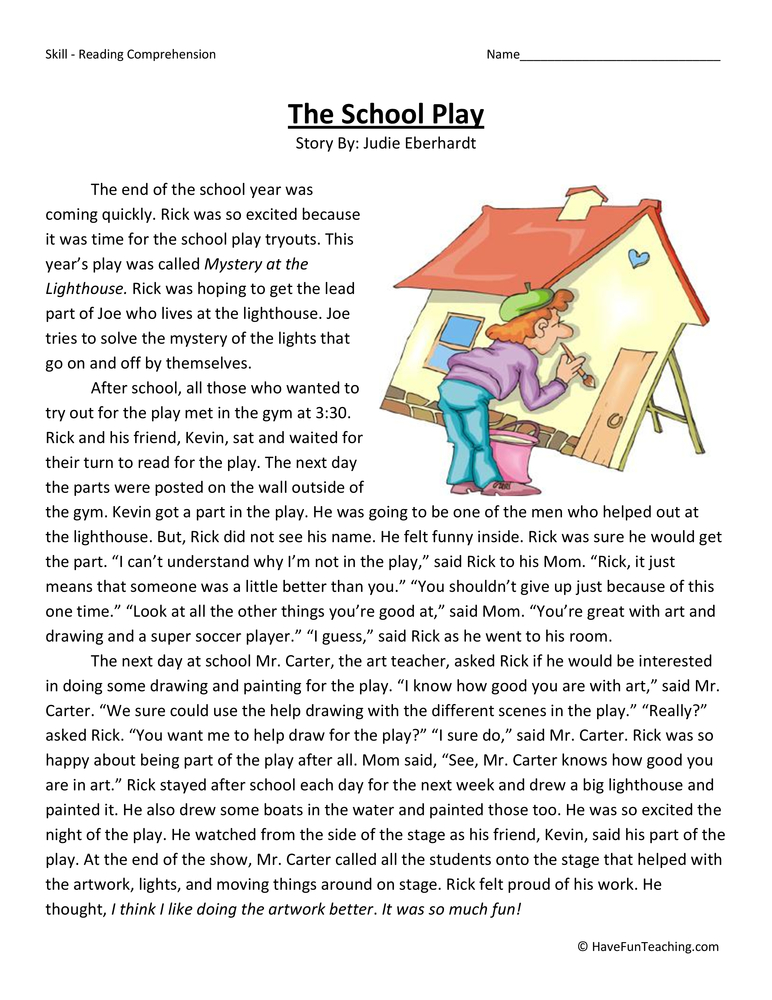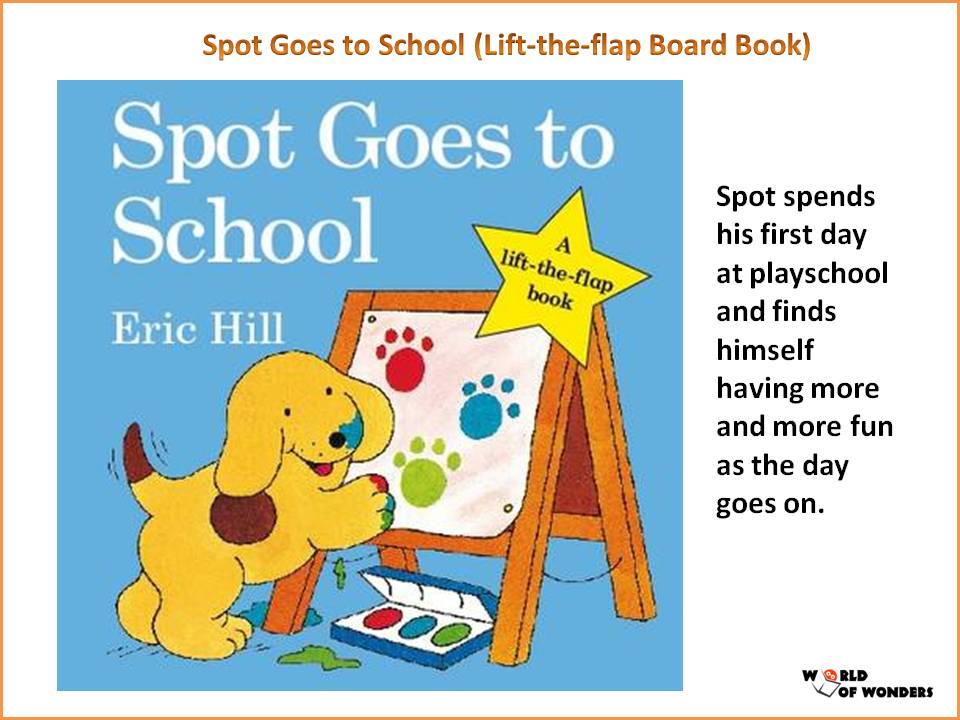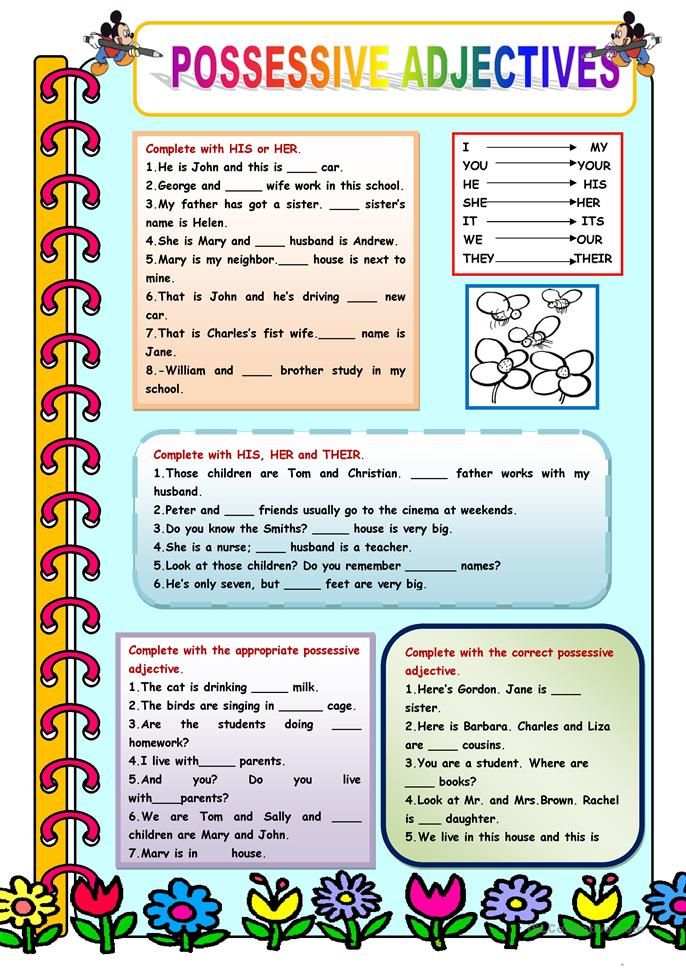Emergent reader activities
11 Activities for Emergent Readers to Practice Fluency
While activities for emergent readers to practice fluency can look slightly different, the basic concepts are the same – helping students to lessen their focus on decoding words so that they can comprehend the meaning of the text and make connections, all while adding phrasing/appropriate pauses to their reading so it sounds like talking. Not too much to ask of a 4-7-year-old, right?
There are so many simultaneous actions taking place while reading that students need to coordinate, sometimes I wonder how any child actually learns to do it effectively! With the importance of the fluency-comprehension connection, the team at ETTC wanted to share some of our favorite activities for emergent readers to practice fluency! # 1 is my favorite!
1. Read Alouds
Yes! A million times YES! Read alouds. Daily. It seems more and more that time for this is being systematically stripped away (I know it was in my district). Shh, don’t tell, but I may have just shut my door and stolen time from other content areas purely because this is SO IMPORTANT.
Students need to hear fluent readers reading. I recently read an article on Reading Rockets, ‘Reading with Your Child by Bernice Cullinan and Brod Bagert,’ that perfectly sums up why I was willing to break the rules for the sake of the read aloud: “When the rhythm and melody of language become a part of a child’s life, learning to read will be as natural as learning to walk and talk.” Not only is this a beautiful sentiment – it holds true. Let them hear you reading aloud to help them internalize the ‘rhythm and melody of language.’
Plus, there are SO many amazing children’s books out there that I wanted to share with my students and this gave me the perfect opportunity to do so (and help them learn to love to read for the pure sake of reading, imagining, and enjoyment).🧡
2. Listen to Reading
Uh, wait. Isn’t this the same as #1? Well, for those of you who can’t squeeze in the read-aloud, you have the option of using a reading center during your instruction (I always had this as a center while I was teaching small groups). There are so many options today and yes – I even had a cassette player in my room – which I still used! I also recorded myself and burned my own listen to reading CDs if I wasn’t able to purchase them from Scholastic as well as having a set of iPads the students could use to access Epic! and Storyline Online.
There are so many options today and yes – I even had a cassette player in my room – which I still used! I also recorded myself and burned my own listen to reading CDs if I wasn’t able to purchase them from Scholastic as well as having a set of iPads the students could use to access Epic! and Storyline Online.
Using the iPads, students could also use my sets of QR codes (cardstock with the book cover and a QR code that I laminated and put on a binder ring) to access a read-aloud on YouTube (with monitoring). The best listen to reading digital activities in my opinion have the words on the screen and as they are read, the words light up or are otherwise noted. Are you seeing the theme here? Listening to fluent readers is critical! This is also why I encourage families to read nightly – taking turns between adult and child reading.
3. Repeated Readings
You want to read that book, again?!? I can just hear the request for the same book we have been reading every night… Does it get old for us adults? Yep.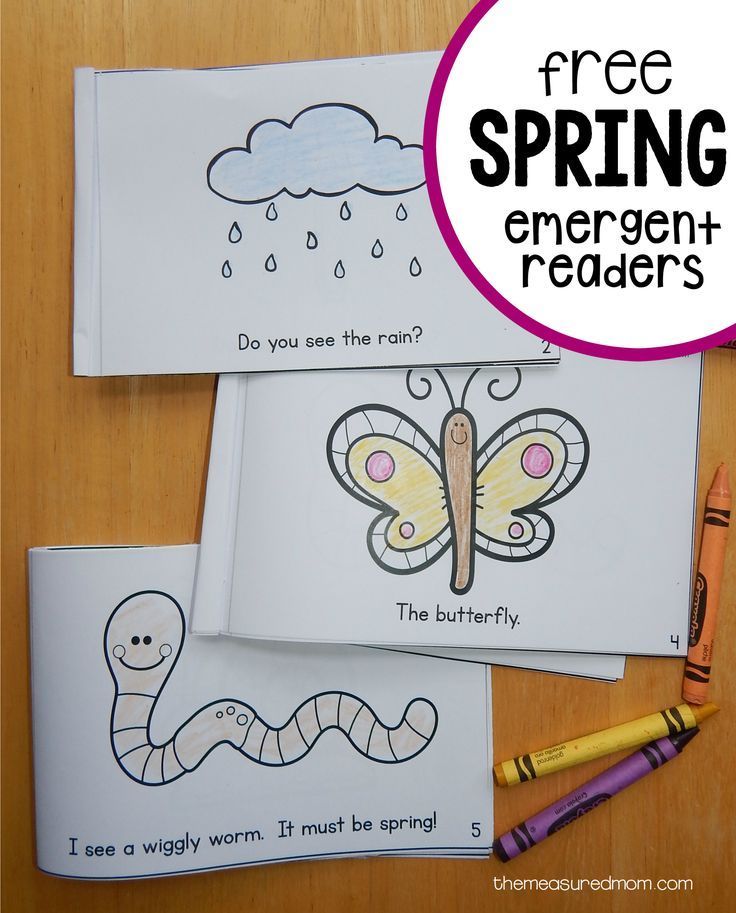 But it is golden for emergent readers. Whether with a bedtime story, guided reading books in a small group, or a shared reading text – repetition is key for fluency.
But it is golden for emergent readers. Whether with a bedtime story, guided reading books in a small group, or a shared reading text – repetition is key for fluency.
In my class, we used a shared reading book each week and by the second or third day, I generally had students venturing into choral reading with me. Not only was I providing for them a model of reading fluency, but through the repeated readings of the same text, they were able to focus less on the decoding and more on the fluency aspect (yes, some of this is memorization, but that’s OK!). Even the lowest readers who weren’t able to keep up with the choral reading option were able to hear fluent reading while following along with my pointing to each word as we read, participating as they were able.
In guided reading, the students read their book multiple times as well and they went into their ‘read to self’ book bags for a few weeks – helping ensure that this time was as impactful as possible. If you want something easy (for you) and printable, check out our Practically First Grade Reading Comprehension Passages and Questions for a huge bundle of 120 monthly themed fluency passages (1o/month).
4. Reading Texts with Repetition
Early emergent readers benefit greatly from the repetition of text (think, “I see the ____.” and the only thing that changes on each page is the item they see, with picture clues). This frees up the student from getting bogged down in the decoding work of reading and allows them to focus on fluency (among other aspects). Our No Prep Monthly Mini-Books for the Year or Alphabet Foldable Booklets are perfect examples of these emergent reader texts (and the Alphabet Foldables even have three different levels of difficulty!) and students get to keep their own copy of the book!
5. Read to a Partner
There are lots of opinions out there about reading to a partner and fluency… I’m of the mindset that the more you read, the more fluent of a reader you become, so any reading is going to help. Students read their guided reading books to another first-grade student during this, but I also had them read to their big buddies from time to time, and vice versa (big buddies reading a picture book to my students, which they all adored doing!).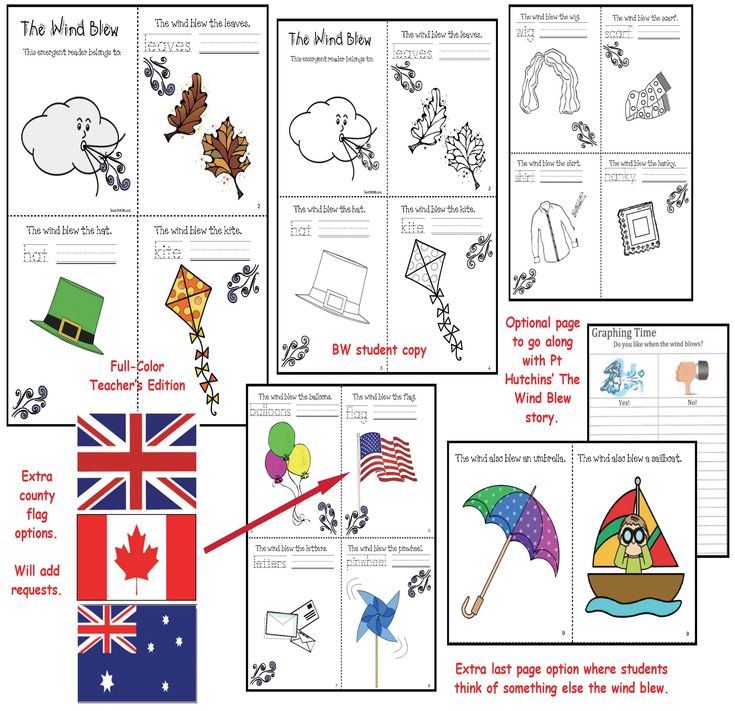
If you choose to do this, be cognizant of who you put together as partners (having an advanced reader and a struggling reader would not be a great pairing, for example) – this wasn’t a time when student choice for partners was an option in my class. We used it as an option while I was teaching small groups, but my teaching partner and I also used it as a reward for students – allowing them to earn time with the other first-grade class reading with partners. This should tell you a lot – the kids loved it!
6. Reader’s Theater
I include this as one of our activities for emergent readers to practice fluency with some caution. Preparing for a reader’s theater performance, particularly with struggling readers, takes significant time. If you don’t have the time to do so and put your students in front of the class to read at less than fully prepared, this could be of significant negative impact on your students’ self-confidence.
However, if you have the time, this can be a thoroughly enjoyable activity for students, teachers, and even families (I always invited families, our principal, and other staff in to see the performance or recorded it to share later when I was able). Beware that not all students are comfortable with being in front of the class and don’t force them to do so if they aren’t ready to do so. Our Reader’s Theater Scripts are a great place to start if you want to implement this in your classroom.
Beware that not all students are comfortable with being in front of the class and don’t force them to do so if they aren’t ready to do so. Our Reader’s Theater Scripts are a great place to start if you want to implement this in your classroom.
The goal of this activity is for students to read with accuracy and fluency to assemble the word strips to the pictures to make a story (five strips/pictures with sentences of varying length and number on each strip). After they’ve assembled the puzzle, they can re-read the story and then draw and write about the story they puzzled together, writing in their own words what the story was about at the end. My students love puzzles so this one is a huge hit! This is part of our November Centers Bundle, but you can get it separately.
8. Poetry
My teaching partner loved teaching poetry…but me? Not so much. She did, however, convince me to implement a weekly poetry activity, which worked wonders for my students’ fluency! I would select a seasonal poem for each week and we would do different activities (phonics, sight words, visualizing, etc.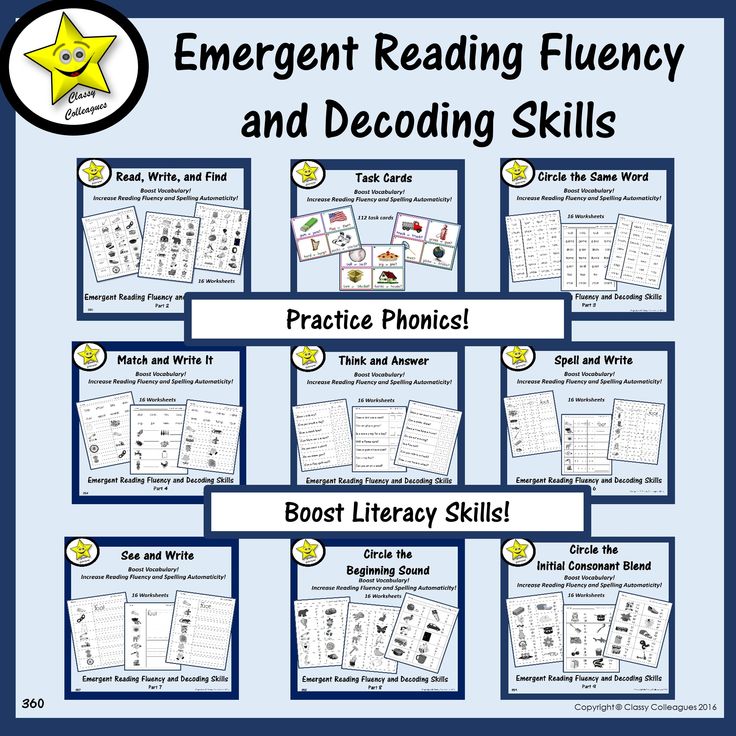 ) with the poem, but the key was reading the poem each day while either a student or I would point to each word of the poem as we did a choral reading of the poem.
) with the poem, but the key was reading the poem each day while either a student or I would point to each word of the poem as we did a choral reading of the poem.
Once I discovered our NO PREP Phonics Poems (available in paper or digital), I immediately made the switch. If you know me, you know I love *organization* (the streamlined look and organization of these were key!) and *multipurpose activities* (not only do students get fluency practice with these poems, they also get phonics practice, I can check comprehension with the addition of the comprehension questions for each poem, and they learn about some of the elements of poetry! I call that a win-win!
9. Fluency Phones
These simple tools can make all the difference in the world when you’re sitting at a guided reading table with four or five students reading out loud, simultaneously. You can get them here or make your own using this DIY tutorial from Make, Take & Teach with PVC pipe. They help students to focus on their own reading and truly hear what they sound like as a reader. The prompt of, ‘Make your reading sound like talking,’ works so much better when they can actually hear themselves reading!
The prompt of, ‘Make your reading sound like talking,’ works so much better when they can actually hear themselves reading!
10. Tracking Tools
Sometimes, focus can be an issue for students (even for some of those students who you wouldn’t peg as someone having trouble focusing). Early on, pointing to each word is beneficial for multiple reasons. For this, use fun, engaging pointers that you mix up so they’re not always the same (witch fingers, magic wands AKA swizzle sticks, and googly eyes were always fun). Eventually though, pointing to each word becomes a hindrance to fluency. When this time comes, I love using these highlight strips which help students focus on one line of text at a time (perfect for when there are more and more lines per page). The added bonus of this is that often, guided reading books come with phrased sections per line!
11. Sentence Pyramids
Sentence pyramids are a great way to mix up your fluency work and can be as simple or as complex as you desire, depending on your student(s).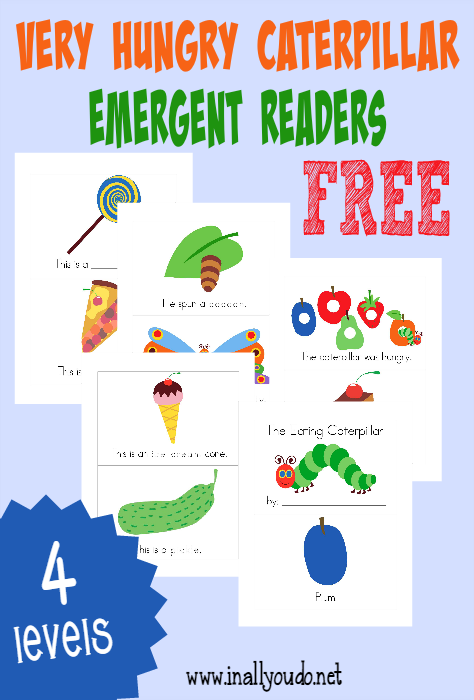 The idea is simple – start with only the first word of a sentence on the first line. On the second line, put the first and second words. Continue adding a word to each line until you complete your sentence.
The idea is simple – start with only the first word of a sentence on the first line. On the second line, put the first and second words. Continue adding a word to each line until you complete your sentence.
This gives students a chance to practice reading each word and gain comfort with it, then re-read the entire sentence thus far before adding on a new word. You can make them silly or content-related, seasonal or tongue twisters – the possibilities are endless. Check out our Sentence Pyramid Fluency Center (part of our July Centers Bundle, but you can get it separately) if you want a print-and-go option.
To improve your students’ fluency, you’ve got to have a strong phonics/word study program and work with sight words that help them to build the foundation of reading skills, allowing them the freedom to focus on the meaning of the words and not get stuck in the decoding. Beyond that, I hope some of these activities for emergent readers to practice fluency help you in your classroom.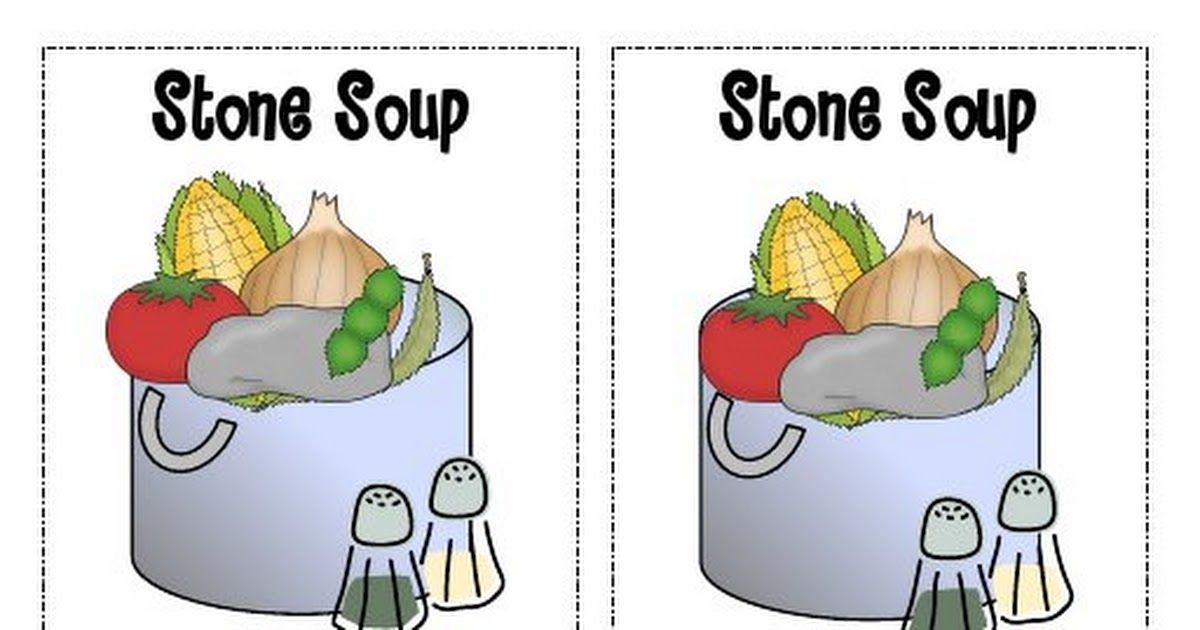 What other activities for emergent readers to practice fluency do you use and love? Share with us below!👇🏼
What other activities for emergent readers to practice fluency do you use and love? Share with us below!👇🏼
Written by: Kristin Halverson
At Education to the Core, we exist to help our teachers build a stronger classroom as they connect with our community to find trusted, state-of-the-art resources designed by teachers for teachers. We aspire to be the world’s leading & most trusted community for educational resources for teachers. We improve the lives of every teacher and learner with the most comprehensive, reliable, and inclusive educational resources.
If you enjoyed what we have to offer at ETTC, be sure to join our email list, so you won’t miss a beat. We are here to help with all your resource needs. Become a Premium Member of Education to the Core and receive immediate access to thousands of printable activities. For one small monthly or annual fee, everything ETTC can be at your fingertips all of the time.
Comments
comments
Emergent Literacy Activities
This post may contain affiliate links.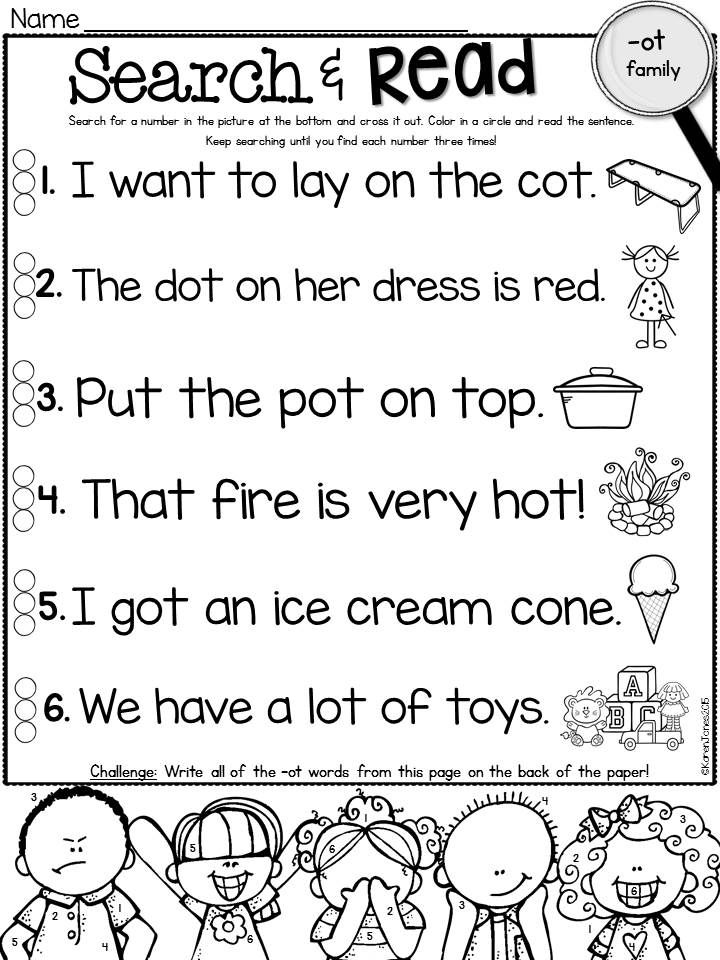 See Disclosure for more information.
See Disclosure for more information.
Emergent literacy is the term used to describe the reading and writing experiences of young children before they learn to write and read conventionally. Playing with letters and words, listening to stories, and exploring books are all ways to boost literacy in early learners. Here are seven fun and effective emergent literacy to use in the preschool classroom.
1. Oral Language: Chip Clip Poems
A great way to develop oral language and comprehension is by singing and playing rhyming games. Chip Clip Poems are a fun way to practice those skills (with bonus skills of counting, numbers, addition, and subtraction!). When oral language is presented in a natural, playful way through songs and fingerplays, the concept is both fun and appropriate for preschool students.
2. Rhyming: Puzzle Pieces
Rhyming is an essential pre-reading skill in English. Research shows that children that can rhyme read much more quickly and easily.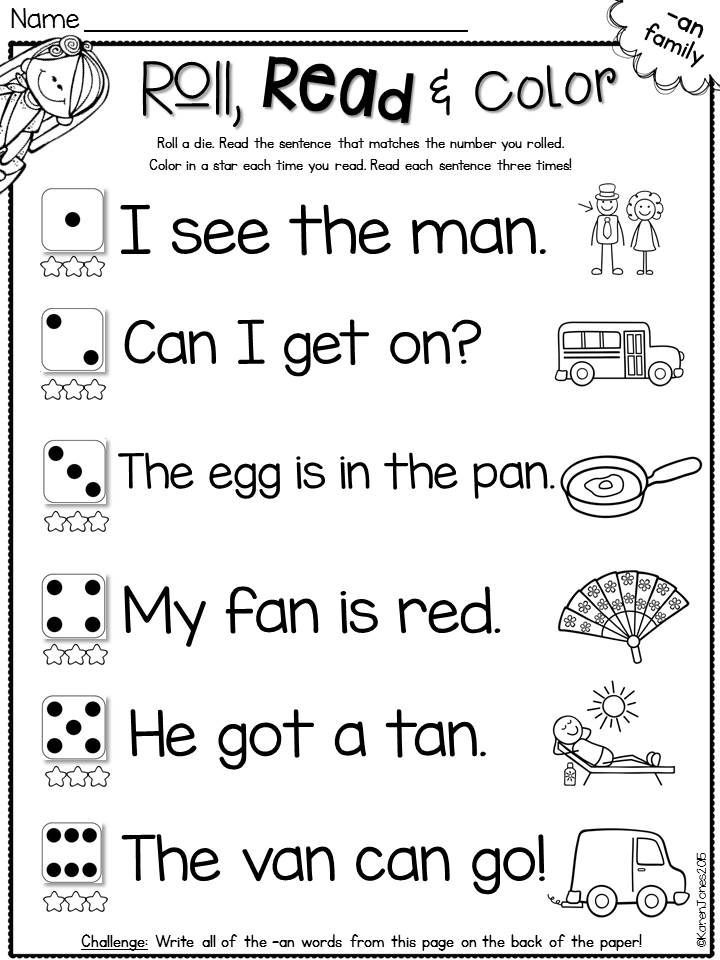 Conversely, research shows that one of the red flags for reading disabilities is the inability to rhyme early on. Students need lots of experience with and exposure to rhymes – in books, songs, games, and more. Puzzles are a great way to start practicing rhyming because not only do the words rhyme, but the shapes match up and help those that are still learning.
Conversely, research shows that one of the red flags for reading disabilities is the inability to rhyme early on. Students need lots of experience with and exposure to rhymes – in books, songs, games, and more. Puzzles are a great way to start practicing rhyming because not only do the words rhyme, but the shapes match up and help those that are still learning.
Phonemes refer to individual sounds that make up words. The most important words to start with in preschool are the student names. Names are a springboard for all literacy learning. When presented in a song, students hear the sounds of their name and begin to recognize their name in print.
4. Sentences: Word Replacement
Young students are just beginning to understand the difference between letters, words, and sentences. Doing word replacement activities helps them segment spoken sentences into a series of individual words.
“Jack and Jill went up the hill to fetch a pail of carrots. ”
”5. Syllables Sorting
Research has proven that the speed with which a child learns to read correlates to how much phonological awareness they receive before and during formal reading instruction. Syllable splitting skills progress toward the end of the phonological awareness spectrum. Clapping hands to segmented words is a great way to practice recognizing syllables.
6. Concepts of Print: Pocket Chart Activity
Developing Concept of Word is the #1 watershed event for emergent readers that leads them right into becoming beginning readers! The goal is to have students point to each word as they read with one-to-one matching. It is important to remember the main focus is not to have the students sound out or spell the words. If the emergent reader stumbles on a word, tell them the word and encourage them to move on.
7. Alphabet Knowledge: Peek-A-Boo Game
Preschool children need LOTS of exposure to letters in order to master the alphabet. As the alphabet is made up of similar lines and curves, students must be able to discriminate from one letter to the next visually.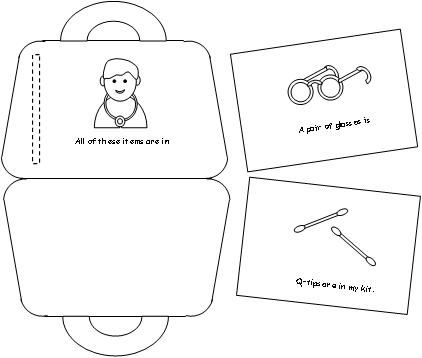 Peek-A-Boo games like this one encourage students to focus on those lines and curves and their placement to guess the letter.
Peek-A-Boo games like this one encourage students to focus on those lines and curves and their placement to guess the letter.
More Resources on Emergent Literacy
- Some fascinating research on Emergent Literacy from Save the Children – long but definitely worth a read!
- Information about Emergent Literacy for students with special needs from the American Speech-Language-Hearing Association.
Print all 7 activities pictured above in this handy eBook:
Are you a teacher?
FREE Emergent Literacy eBook
Download your free Emergent Literacy eBook!
After you subscribe, you will be redirected to the FREE eBook. We respect your privacy. Unsubscribe at any time.
Filed Under: Learn to Read, Literacy
You May Also Enjoy These Posts
Binoculars Craft for Preschoolers
12 Fun Preschool Painting Ideas: Exploring Different “Brushes”
Reader Interactions
Improving the reading skills of younger students in extracurricular activities
%PDF-1. 5 % 10 obj > /Metadata 4 0 R >> endobj 5 0 obj /Title >> endobj 20 obj > endobj 3 0 obj > endobj 40 obj > stream
5 % 10 obj > /Metadata 4 0 R >> endobj 5 0 obj /Title >> endobj 20 obj > endobj 3 0 obj > endobj 40 obj > stream
 32 841.92] /Contents[117 0 R 118 0 R 119 0 R] /group> /Tabs /S /StructParents 0 /Annots [120 0R] >> endobj 70 obj > /ExtGState> /ProcSet [/PDF /Text /ImageB /ImageC /ImageI] >> /MediaBox [0 0 595.32 841.92] /Contents 121 0 R /group> /Tabs /S /StructParents 1 >> endobj 80 obj > /ExtGState> /ProcSet [/PDF /Text /ImageB /ImageC /ImageI] >> /MediaBox [0 0 595.32 841.92] /Contents 122 0 R /group> /Tabs /S /StructParents 2 >> endobj 9 0 obj > /ExtGState> /ProcSet [/PDF /Text /ImageB /ImageC /ImageI] >> /MediaBox[0 0 595.32 841.92] /Contents 123 0 R /group> /Tabs /S /StructParents 3 >> endobj 10 0 obj > /ExtGState> /ProcSet [/PDF /Text /ImageB /ImageC /ImageI] >> /MediaBox [0 0 595.32 841.92] /Contents 124 0 R /group> /Tabs /S /StructParents 4 >> endobj 11 0 obj > /ExtGState> /ProcSet [/PDF /Text /ImageB /ImageC /ImageI] >> /MediaBox [0 0 595.32 841.92] /Contents 127 0 R /group> /Tabs /S /StructParents 5 >> endobj 12 0 obj > /ExtGState> /ProcSet [/PDF /Text /ImageB /ImageC /ImageI] >> /MediaBox[0 0 595.
32 841.92] /Contents[117 0 R 118 0 R 119 0 R] /group> /Tabs /S /StructParents 0 /Annots [120 0R] >> endobj 70 obj > /ExtGState> /ProcSet [/PDF /Text /ImageB /ImageC /ImageI] >> /MediaBox [0 0 595.32 841.92] /Contents 121 0 R /group> /Tabs /S /StructParents 1 >> endobj 80 obj > /ExtGState> /ProcSet [/PDF /Text /ImageB /ImageC /ImageI] >> /MediaBox [0 0 595.32 841.92] /Contents 122 0 R /group> /Tabs /S /StructParents 2 >> endobj 9 0 obj > /ExtGState> /ProcSet [/PDF /Text /ImageB /ImageC /ImageI] >> /MediaBox[0 0 595.32 841.92] /Contents 123 0 R /group> /Tabs /S /StructParents 3 >> endobj 10 0 obj > /ExtGState> /ProcSet [/PDF /Text /ImageB /ImageC /ImageI] >> /MediaBox [0 0 595.32 841.92] /Contents 124 0 R /group> /Tabs /S /StructParents 4 >> endobj 11 0 obj > /ExtGState> /ProcSet [/PDF /Text /ImageB /ImageC /ImageI] >> /MediaBox [0 0 595.32 841.92] /Contents 127 0 R /group> /Tabs /S /StructParents 5 >> endobj 12 0 obj > /ExtGState> /ProcSet [/PDF /Text /ImageB /ImageC /ImageI] >> /MediaBox[0 0 595.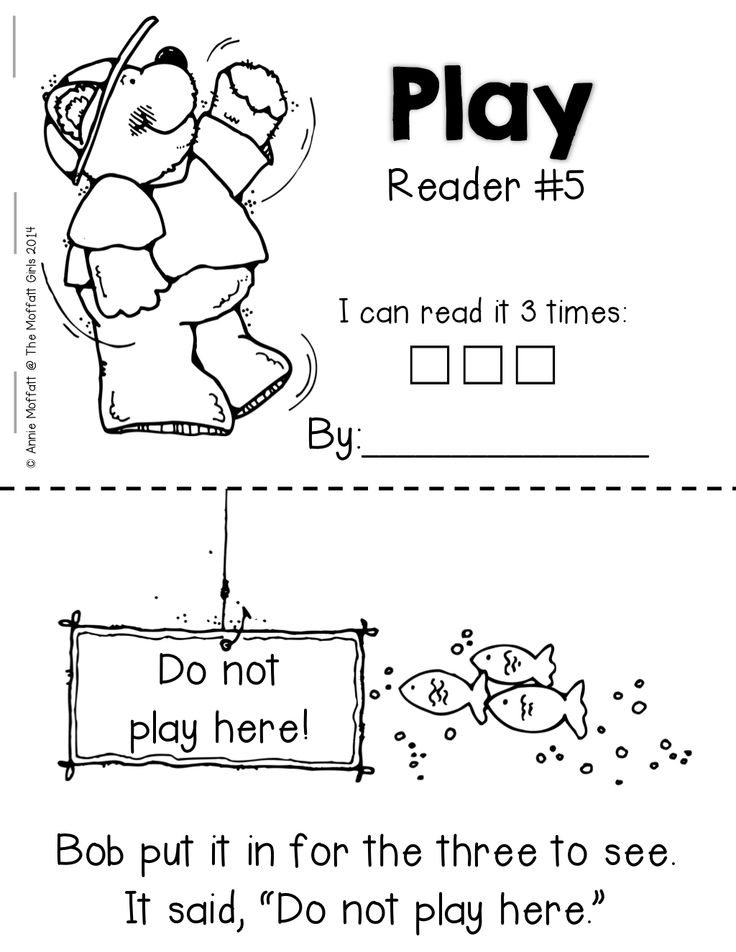 32 841.92] /Contents 128 0 R /group> /Tabs /S /StructParents 6 >> endobj 13 0 obj > /ExtGState> /ProcSet [/PDF /Text /ImageB /ImageC /ImageI] >> /MediaBox [0 0 595.32 841.92] /Contents 130 0 R /group> /Tabs /S /StructParents 7 >> endobj 14 0 obj > /ExtGState> /ProcSet [/PDF /Text /ImageB /ImageC /ImageI] >> /MediaBox [0 0 595.32 841.92] /Contents 131 0 R /group> /Tabs /S /StructParents 8 >> endobj 15 0 obj > /ExtGState> /ProcSet [/PDF /Text /ImageB /ImageC /ImageI] >> /MediaBox[0 0 595.32 841.92] /Contents 132 0 R /group> /Tabs /S /StructParents 9 >> endobj 16 0 obj > /ExtGState> /ProcSet [/PDF /Text /ImageB /ImageC /ImageI] >> /MediaBox [0 0 595.32 841.92] /Contents 133 0R /group> /Tabs /S /StructParents 10 >> endobj 17 0 obj > /ExtGState> /ProcSet [/PDF /Text /ImageB /ImageC /ImageI] >> /MediaBox [0 0 595.32 841.92] /Contents 134 0R /group> /Tabs /S /StructParents 11 >> endobj 18 0 obj > /ExtGState> /ProcSet [/PDF /Text /ImageB /ImageC /ImageI] >> /MediaBox[0 0 595.32 841.92] /Contents 135 0 R /group> /Tabs /S /StructParents 12 >> endobj 19 0 obj > /ExtGState> /ProcSet [/PDF /Text /ImageB /ImageC /ImageI] >> /MediaBox [0 0 595.
32 841.92] /Contents 128 0 R /group> /Tabs /S /StructParents 6 >> endobj 13 0 obj > /ExtGState> /ProcSet [/PDF /Text /ImageB /ImageC /ImageI] >> /MediaBox [0 0 595.32 841.92] /Contents 130 0 R /group> /Tabs /S /StructParents 7 >> endobj 14 0 obj > /ExtGState> /ProcSet [/PDF /Text /ImageB /ImageC /ImageI] >> /MediaBox [0 0 595.32 841.92] /Contents 131 0 R /group> /Tabs /S /StructParents 8 >> endobj 15 0 obj > /ExtGState> /ProcSet [/PDF /Text /ImageB /ImageC /ImageI] >> /MediaBox[0 0 595.32 841.92] /Contents 132 0 R /group> /Tabs /S /StructParents 9 >> endobj 16 0 obj > /ExtGState> /ProcSet [/PDF /Text /ImageB /ImageC /ImageI] >> /MediaBox [0 0 595.32 841.92] /Contents 133 0R /group> /Tabs /S /StructParents 10 >> endobj 17 0 obj > /ExtGState> /ProcSet [/PDF /Text /ImageB /ImageC /ImageI] >> /MediaBox [0 0 595.32 841.92] /Contents 134 0R /group> /Tabs /S /StructParents 11 >> endobj 18 0 obj > /ExtGState> /ProcSet [/PDF /Text /ImageB /ImageC /ImageI] >> /MediaBox[0 0 595.32 841.92] /Contents 135 0 R /group> /Tabs /S /StructParents 12 >> endobj 19 0 obj > /ExtGState> /ProcSet [/PDF /Text /ImageB /ImageC /ImageI] >> /MediaBox [0 0 595.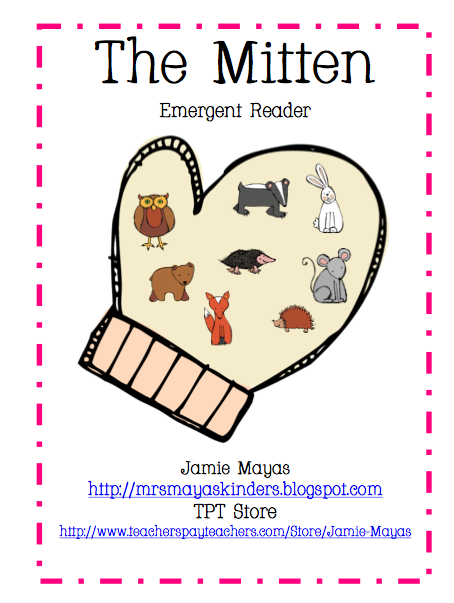 32 841.92] /Contents 136 0R /group> /Tabs /S /StructParents 13 >> endobj 20 0 obj > /ExtGState> /ProcSet [/PDF /Text /ImageB /ImageC /ImageI] >> /MediaBox [0 0 595.32 841.92] /Contents 137 0R /group> /Tabs /S /StructParents 14 >> endobj 21 0 obj > /ExtGState> /ProcSet [/PDF /Text /ImageB /ImageC /ImageI] >> /MediaBox[0 0 595.32 841.92] /Contents 138 0 R /group> /Tabs /S /StructParents 15 >> endobj 22 0 obj > /ExtGState> /ProcSet [/PDF /Text /ImageB /ImageC /ImageI] >> /MediaBox [0 0 595.32 841.92] /Contents 139 0 R /group> /Tabs /S /StructParents 16 >> endobj 23 0 obj > /ExtGState> /ProcSet [/PDF /Text /ImageB /ImageC /ImageI] >> /MediaBox [0 0 595.32 841.92] /Contents 140 0 R /group> /Tabs /S /StructParents 17 >> endobj 24 0 obj > /ExtGState> /ProcSet [/PDF /Text /ImageB /ImageC /ImageI] >> /MediaBox[0 0 595.32 841.92] /Contents 141 0 R /group> /Tabs /S /StructParents 18 >> endobj 25 0 obj > /ExtGState> /ProcSet [/PDF /Text /ImageB /ImageC /ImageI] >> /MediaBox [0 0 595.32 841.92] /Contents 142 0R /group> /Tabs /S /StructParents 19 >> endobj 26 0 obj > /ExtGState> /ProcSet [/PDF /Text /ImageB /ImageC /ImageI] >> /MediaBox [0 0 595.
32 841.92] /Contents 136 0R /group> /Tabs /S /StructParents 13 >> endobj 20 0 obj > /ExtGState> /ProcSet [/PDF /Text /ImageB /ImageC /ImageI] >> /MediaBox [0 0 595.32 841.92] /Contents 137 0R /group> /Tabs /S /StructParents 14 >> endobj 21 0 obj > /ExtGState> /ProcSet [/PDF /Text /ImageB /ImageC /ImageI] >> /MediaBox[0 0 595.32 841.92] /Contents 138 0 R /group> /Tabs /S /StructParents 15 >> endobj 22 0 obj > /ExtGState> /ProcSet [/PDF /Text /ImageB /ImageC /ImageI] >> /MediaBox [0 0 595.32 841.92] /Contents 139 0 R /group> /Tabs /S /StructParents 16 >> endobj 23 0 obj > /ExtGState> /ProcSet [/PDF /Text /ImageB /ImageC /ImageI] >> /MediaBox [0 0 595.32 841.92] /Contents 140 0 R /group> /Tabs /S /StructParents 17 >> endobj 24 0 obj > /ExtGState> /ProcSet [/PDF /Text /ImageB /ImageC /ImageI] >> /MediaBox[0 0 595.32 841.92] /Contents 141 0 R /group> /Tabs /S /StructParents 18 >> endobj 25 0 obj > /ExtGState> /ProcSet [/PDF /Text /ImageB /ImageC /ImageI] >> /MediaBox [0 0 595.32 841.92] /Contents 142 0R /group> /Tabs /S /StructParents 19 >> endobj 26 0 obj > /ExtGState> /ProcSet [/PDF /Text /ImageB /ImageC /ImageI] >> /MediaBox [0 0 595.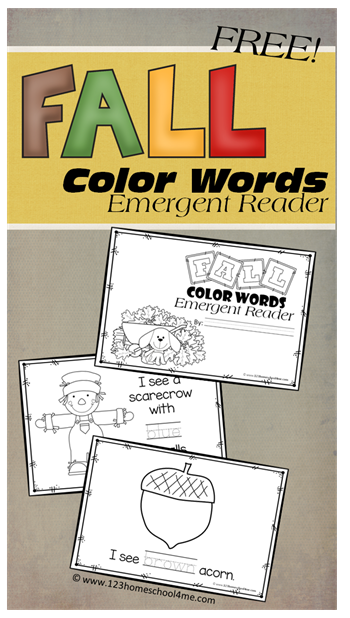 32 841.92] /Contents 143 0 R /group> /Tabs /S /StructParents 20 >> endobj 27 0 obj > /ExtGState> /ProcSet [/PDF /Text /ImageB /ImageC /ImageI] >> /MediaBox[0 0 595.32 841.92] /Contents 144 0 R /group> /Tabs /S /StructParents 21 >> endobj 28 0 obj > /ExtGState> /ProcSet [/PDF /Text /ImageB /ImageC /ImageI] >> /MediaBox [0 0 595.32 841.92] /Contents 145 0 R /group> /Tabs /S /StructParents 22 >> endobj 29 0 obj > /ExtGState> /ProcSet [/PDF /Text /ImageB /ImageC /ImageI] >> /MediaBox [0 0 595.32 841.92] /Contents 146 0R /group> /Tabs /S /StructParents 23 >> endobj 30 0 obj > /ExtGState> /ProcSet [/PDF /Text /ImageB /ImageC /ImageI] >> /MediaBox[0 0 595.32 841.92] /Contents 147 0R /group> /Tabs /S /StructParents 24 >> endobj 31 0 obj > /ExtGState> /ProcSet [/PDF /Text /ImageB /ImageC /ImageI] >> /MediaBox [0 0 595.32 841.92] /Contents 148 0R /group> /Tabs /S /StructParents 25 >> endobj 32 0 obj > /ExtGState> /ProcSet [/PDF /Text /ImageB /ImageC /ImageI] >> /MediaBox [0 0 595.32 841.92] /Contents 149 0R /group> /Tabs /S /StructParents 26 >> endobj 33 0 obj > /ExtGState> /ProcSet [/PDF /Text /ImageB /ImageC /ImageI] >> /MediaBox[0 0 595.
32 841.92] /Contents 143 0 R /group> /Tabs /S /StructParents 20 >> endobj 27 0 obj > /ExtGState> /ProcSet [/PDF /Text /ImageB /ImageC /ImageI] >> /MediaBox[0 0 595.32 841.92] /Contents 144 0 R /group> /Tabs /S /StructParents 21 >> endobj 28 0 obj > /ExtGState> /ProcSet [/PDF /Text /ImageB /ImageC /ImageI] >> /MediaBox [0 0 595.32 841.92] /Contents 145 0 R /group> /Tabs /S /StructParents 22 >> endobj 29 0 obj > /ExtGState> /ProcSet [/PDF /Text /ImageB /ImageC /ImageI] >> /MediaBox [0 0 595.32 841.92] /Contents 146 0R /group> /Tabs /S /StructParents 23 >> endobj 30 0 obj > /ExtGState> /ProcSet [/PDF /Text /ImageB /ImageC /ImageI] >> /MediaBox[0 0 595.32 841.92] /Contents 147 0R /group> /Tabs /S /StructParents 24 >> endobj 31 0 obj > /ExtGState> /ProcSet [/PDF /Text /ImageB /ImageC /ImageI] >> /MediaBox [0 0 595.32 841.92] /Contents 148 0R /group> /Tabs /S /StructParents 25 >> endobj 32 0 obj > /ExtGState> /ProcSet [/PDF /Text /ImageB /ImageC /ImageI] >> /MediaBox [0 0 595.32 841.92] /Contents 149 0R /group> /Tabs /S /StructParents 26 >> endobj 33 0 obj > /ExtGState> /ProcSet [/PDF /Text /ImageB /ImageC /ImageI] >> /MediaBox[0 0 595. 32 841.92] /Contents 150 0R /group> /Tabs /S /StructParents 27 >> endobj 34 0 obj > /ExtGState> /ProcSet [/PDF /Text /ImageB /ImageC /ImageI] >> /MediaBox [0 0 595.32 841.92] /Contents 151 0 R /group> /Tabs /S /StructParents 28 >> endobj 35 0 obj > /ExtGState> /ProcSet [/PDF /Text /ImageB /ImageC /ImageI] >> /MediaBox [0 0 595.32 841.92] /Contents 152 0R /group> /Tabs /S /StructParents 29 >> endobj 36 0 obj > /ExtGState> /ProcSet [/PDF /Text /ImageB /ImageC /ImageI] >> /MediaBox[0 0 595.32 841.92] /Contents 153 0 R /group> /Tabs /S /StructParents 30 >> endobj 37 0 obj > /ExtGState> /ProcSet [/PDF /Text /ImageB /ImageC /ImageI] >> /MediaBox [0 0 595.32 841.92] /Contents 154 0R /group> /Tabs /S /StructParents 31 >> endobj 38 0 obj > /ExtGState> /ProcSet [/PDF /Text /ImageB /ImageC /ImageI] >> /MediaBox [0 0 595.32 841.92] /Contents 155 0R /group> /Tabs /S /StructParents 32 >> endobj 39 0 obj > /ExtGState> /ProcSet [/PDF /Text /ImageB /ImageC /ImageI] >> /MediaBox[0 0 595.32 841.92] /Contents 156 0 R /group> /Tabs /S /StructParents 33 >> endobj 40 0 obj > /ExtGState> /ProcSet [/PDF /Text /ImageB /ImageC /ImageI] >> /MediaBox [0 0 595.
32 841.92] /Contents 150 0R /group> /Tabs /S /StructParents 27 >> endobj 34 0 obj > /ExtGState> /ProcSet [/PDF /Text /ImageB /ImageC /ImageI] >> /MediaBox [0 0 595.32 841.92] /Contents 151 0 R /group> /Tabs /S /StructParents 28 >> endobj 35 0 obj > /ExtGState> /ProcSet [/PDF /Text /ImageB /ImageC /ImageI] >> /MediaBox [0 0 595.32 841.92] /Contents 152 0R /group> /Tabs /S /StructParents 29 >> endobj 36 0 obj > /ExtGState> /ProcSet [/PDF /Text /ImageB /ImageC /ImageI] >> /MediaBox[0 0 595.32 841.92] /Contents 153 0 R /group> /Tabs /S /StructParents 30 >> endobj 37 0 obj > /ExtGState> /ProcSet [/PDF /Text /ImageB /ImageC /ImageI] >> /MediaBox [0 0 595.32 841.92] /Contents 154 0R /group> /Tabs /S /StructParents 31 >> endobj 38 0 obj > /ExtGState> /ProcSet [/PDF /Text /ImageB /ImageC /ImageI] >> /MediaBox [0 0 595.32 841.92] /Contents 155 0R /group> /Tabs /S /StructParents 32 >> endobj 39 0 obj > /ExtGState> /ProcSet [/PDF /Text /ImageB /ImageC /ImageI] >> /MediaBox[0 0 595.32 841.92] /Contents 156 0 R /group> /Tabs /S /StructParents 33 >> endobj 40 0 obj > /ExtGState> /ProcSet [/PDF /Text /ImageB /ImageC /ImageI] >> /MediaBox [0 0 595. 32 841.92] /Contents 157 0R /group> /Tabs /S /StructParents 34 >> endobj 41 0 obj > /ExtGState> /ProcSet [/PDF /Text /ImageB /ImageC /ImageI] >> /MediaBox [0 0 595.32 841.92] /Contents 158 0 R /group> /Tabs /S /StructParents 35 >> endobj 42 0 obj > /ExtGState> /ProcSet [/PDF /Text /ImageB /ImageC /ImageI] >> /MediaBox[0 0 595.32 841.92] /Contents 159 0R /group> /Tabs /S /StructParents 36 >> endobj 43 0 obj > /ExtGState> /ProcSet [/PDF /Text /ImageB /ImageC /ImageI] >> /MediaBox [0 0 595.32 841.92] /Contents 160 0R /group> /Tabs /S /StructParents 37 >> endobj 44 0 obj > /ExtGState> /ProcSet [/PDF /Text /ImageB /ImageC /ImageI] >> /MediaBox [0 0 595.32 841.92] /Contents 161 0R /group> /Tabs /S /StructParents 38 >> endobj 45 0 obj > /ExtGState> /ProcSet [/PDF /Text /ImageB /ImageC /ImageI] >> /MediaBox[0 0 595.32 841.92] /Contents 162 0 R /group> /Tabs /S /StructParents 39 >> endobj 46 0 obj > /ExtGState> /ProcSet [/PDF /Text /ImageB /ImageC /ImageI] >> /MediaBox [0 0 595.32 841.92] /Contents 163 0R /group> /Tabs /S /StructParents 40 >> endobj 47 0 obj > /ExtGState> /ProcSet [/PDF /Text /ImageB /ImageC /ImageI] >> /MediaBox [0 0 595.
32 841.92] /Contents 157 0R /group> /Tabs /S /StructParents 34 >> endobj 41 0 obj > /ExtGState> /ProcSet [/PDF /Text /ImageB /ImageC /ImageI] >> /MediaBox [0 0 595.32 841.92] /Contents 158 0 R /group> /Tabs /S /StructParents 35 >> endobj 42 0 obj > /ExtGState> /ProcSet [/PDF /Text /ImageB /ImageC /ImageI] >> /MediaBox[0 0 595.32 841.92] /Contents 159 0R /group> /Tabs /S /StructParents 36 >> endobj 43 0 obj > /ExtGState> /ProcSet [/PDF /Text /ImageB /ImageC /ImageI] >> /MediaBox [0 0 595.32 841.92] /Contents 160 0R /group> /Tabs /S /StructParents 37 >> endobj 44 0 obj > /ExtGState> /ProcSet [/PDF /Text /ImageB /ImageC /ImageI] >> /MediaBox [0 0 595.32 841.92] /Contents 161 0R /group> /Tabs /S /StructParents 38 >> endobj 45 0 obj > /ExtGState> /ProcSet [/PDF /Text /ImageB /ImageC /ImageI] >> /MediaBox[0 0 595.32 841.92] /Contents 162 0 R /group> /Tabs /S /StructParents 39 >> endobj 46 0 obj > /ExtGState> /ProcSet [/PDF /Text /ImageB /ImageC /ImageI] >> /MediaBox [0 0 595.32 841.92] /Contents 163 0R /group> /Tabs /S /StructParents 40 >> endobj 47 0 obj > /ExtGState> /ProcSet [/PDF /Text /ImageB /ImageC /ImageI] >> /MediaBox [0 0 595.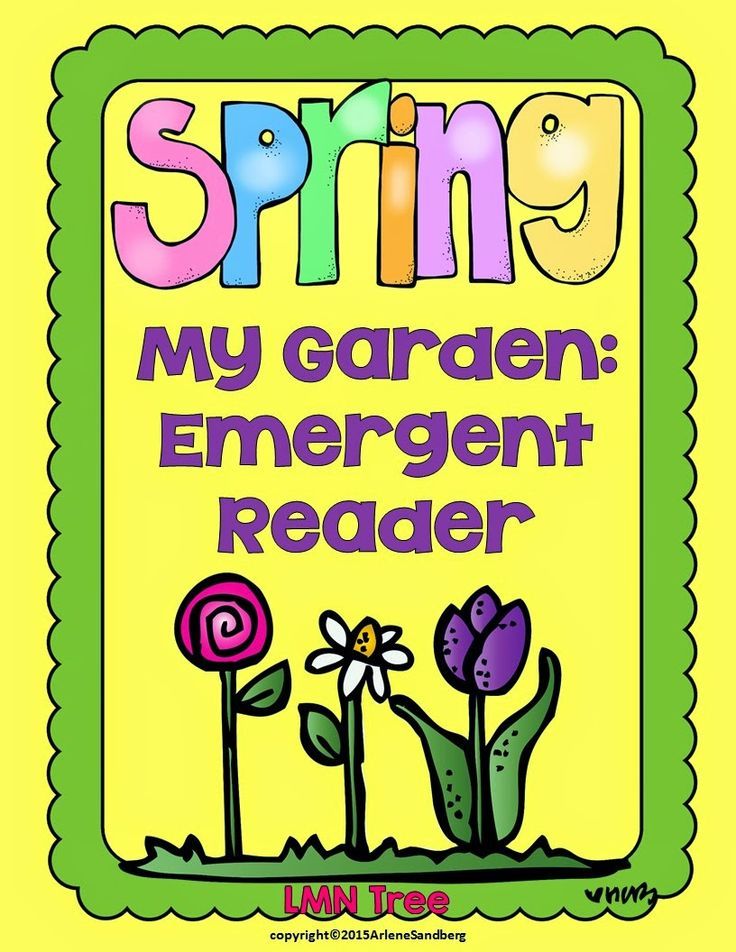 32 841.92] /Contents 164 0R /group> /Tabs /S /StructParents 41 >> endobj 48 0 obj > /ExtGState> /ProcSet [/PDF /Text /ImageB /ImageC /ImageI] >> /MediaBox[0 0 595.32 841.92] /Contents 165 0R /group> /Tabs /S /StructParents 42 >> endobj 49 0 obj > /ExtGState> /ProcSet [/PDF /Text /ImageB /ImageC /ImageI] >> /MediaBox [0 0 595.32 841.92] /Contents 166 0 R /group> /Tabs /S /StructParents 43 >> endobj 50 0 obj > /ExtGState> /ProcSet [/PDF /Text /ImageB /ImageC /ImageI] >> /MediaBox [0 0 595.32 841.92] /Contents 167 0 R /group> /Tabs /S /StructParents 44 >> endobj 51 0 obj > /ExtGState> /ProcSet [/PDF /Text /ImageB /ImageC /ImageI] >> /MediaBox[0 0 595.32 841.92] /Contents 168 0 R /group> /Tabs /S /StructParents 45 >> endobj 52 0 obj > /ExtGState> /ProcSet [/PDF /Text /ImageB /ImageC /ImageI] >> /MediaBox [0 0 595.32 841.92] /Contents 169 0 R /group> /Tabs /S /StructParents 46 >> endobj 53 0 obj > /ExtGState> /ProcSet [/PDF /Text /ImageB /ImageC /ImageI] >> /MediaBox [0 0 595.32 841.92] /Contents 170 0 R /group> /Tabs /S /StructParents 47 >> endobj 54 0 obj > /ExtGState> /ProcSet [/PDF /Text /ImageB /ImageC /ImageI] >> /MediaBox[0 0 595.
32 841.92] /Contents 164 0R /group> /Tabs /S /StructParents 41 >> endobj 48 0 obj > /ExtGState> /ProcSet [/PDF /Text /ImageB /ImageC /ImageI] >> /MediaBox[0 0 595.32 841.92] /Contents 165 0R /group> /Tabs /S /StructParents 42 >> endobj 49 0 obj > /ExtGState> /ProcSet [/PDF /Text /ImageB /ImageC /ImageI] >> /MediaBox [0 0 595.32 841.92] /Contents 166 0 R /group> /Tabs /S /StructParents 43 >> endobj 50 0 obj > /ExtGState> /ProcSet [/PDF /Text /ImageB /ImageC /ImageI] >> /MediaBox [0 0 595.32 841.92] /Contents 167 0 R /group> /Tabs /S /StructParents 44 >> endobj 51 0 obj > /ExtGState> /ProcSet [/PDF /Text /ImageB /ImageC /ImageI] >> /MediaBox[0 0 595.32 841.92] /Contents 168 0 R /group> /Tabs /S /StructParents 45 >> endobj 52 0 obj > /ExtGState> /ProcSet [/PDF /Text /ImageB /ImageC /ImageI] >> /MediaBox [0 0 595.32 841.92] /Contents 169 0 R /group> /Tabs /S /StructParents 46 >> endobj 53 0 obj > /ExtGState> /ProcSet [/PDF /Text /ImageB /ImageC /ImageI] >> /MediaBox [0 0 595.32 841.92] /Contents 170 0 R /group> /Tabs /S /StructParents 47 >> endobj 54 0 obj > /ExtGState> /ProcSet [/PDF /Text /ImageB /ImageC /ImageI] >> /MediaBox[0 0 595.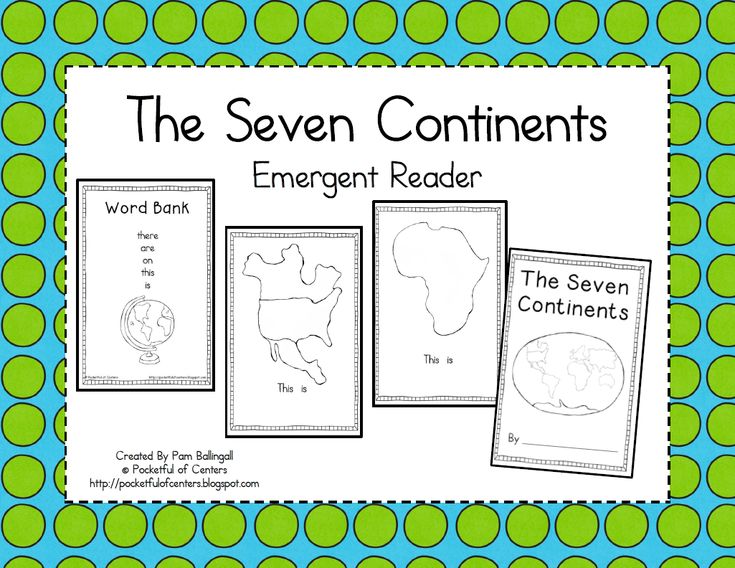 32 841.92] /Contents 171 0R /group> /Tabs /S /StructParents 48 >> endobj 55 0 obj > /ExtGState> /ProcSet [/PDF /Text /ImageB /ImageC /ImageI] >> /MediaBox [0 0 595.32 841.92] /Contents 172 0R /group> /Tabs /S /StructParents 49 >> endobj 56 0 obj > /ExtGState> /ProcSet [/PDF /Text /ImageB /ImageC /ImageI] >> /MediaBox [0 0 595.32 841.92] /Contents 173 0R /group> /Tabs /S /StructParents 50 >> endobj 57 0 obj > /ExtGState> /ProcSet [/PDF /Text /ImageB /ImageC /ImageI] >> /MediaBox[0 0 595.32 841.92] /Contents 174 0R /group> /Tabs /S /StructParents 51 >> endobj 58 0 obj > /ExtGState> /ProcSet [/PDF /Text /ImageB /ImageC /ImageI] >> /MediaBox [0 0 595.32 841.92] /Contents 175 0R /group> /Tabs /S /StructParents 52 >> endobj 59 0 obj > /ExtGState> /ProcSet [/PDF /Text /ImageB /ImageC /ImageI] >> /MediaBox [0 0 595.32 841.92] /Contents 176 0R /group> /Tabs /S /StructParents 53 >> endobj 60 0 obj > /ExtGState> /ProcSet [/PDF /Text /ImageB /ImageC /ImageI] >> /MediaBox[0 0 595.32 841.92] /Contents 177 0 R /group> /Tabs /S /StructParents 54 >> endobj 61 0 obj > /ExtGState> /ProcSet [/PDF /Text /ImageB /ImageC /ImageI] >> /MediaBox [0 0 595.
32 841.92] /Contents 171 0R /group> /Tabs /S /StructParents 48 >> endobj 55 0 obj > /ExtGState> /ProcSet [/PDF /Text /ImageB /ImageC /ImageI] >> /MediaBox [0 0 595.32 841.92] /Contents 172 0R /group> /Tabs /S /StructParents 49 >> endobj 56 0 obj > /ExtGState> /ProcSet [/PDF /Text /ImageB /ImageC /ImageI] >> /MediaBox [0 0 595.32 841.92] /Contents 173 0R /group> /Tabs /S /StructParents 50 >> endobj 57 0 obj > /ExtGState> /ProcSet [/PDF /Text /ImageB /ImageC /ImageI] >> /MediaBox[0 0 595.32 841.92] /Contents 174 0R /group> /Tabs /S /StructParents 51 >> endobj 58 0 obj > /ExtGState> /ProcSet [/PDF /Text /ImageB /ImageC /ImageI] >> /MediaBox [0 0 595.32 841.92] /Contents 175 0R /group> /Tabs /S /StructParents 52 >> endobj 59 0 obj > /ExtGState> /ProcSet [/PDF /Text /ImageB /ImageC /ImageI] >> /MediaBox [0 0 595.32 841.92] /Contents 176 0R /group> /Tabs /S /StructParents 53 >> endobj 60 0 obj > /ExtGState> /ProcSet [/PDF /Text /ImageB /ImageC /ImageI] >> /MediaBox[0 0 595.32 841.92] /Contents 177 0 R /group> /Tabs /S /StructParents 54 >> endobj 61 0 obj > /ExtGState> /ProcSet [/PDF /Text /ImageB /ImageC /ImageI] >> /MediaBox [0 0 595.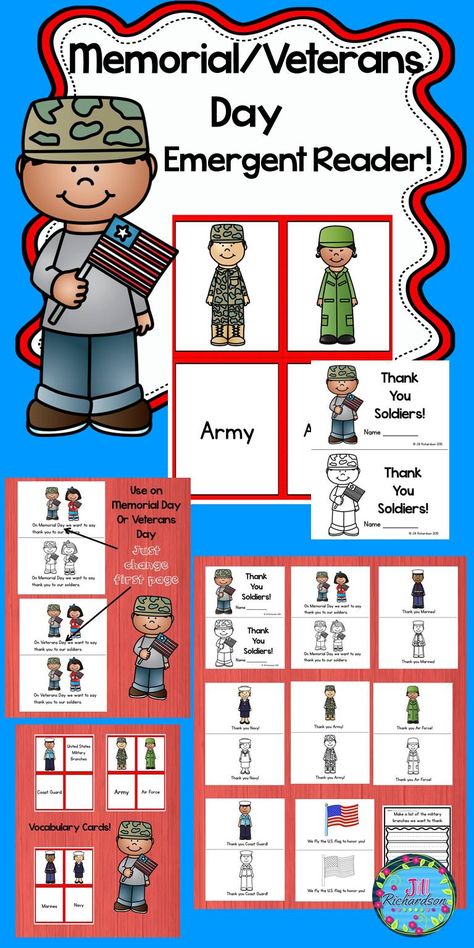 32 841.92] /Contents 178 0 R /group> /Tabs /S /StructParents 55 >> endobj 62 0 obj > /ExtGState> /ProcSet [/PDF /Text /ImageB /ImageC /ImageI] >> /MediaBox [0 0 595.32 841.92] /Contents 179 0 R /group> /Tabs /S /StructParents 56 >> endobj 63 0 obj > /ExtGState> /ProcSet [/PDF /Text /ImageB /ImageC /ImageI] >> /MediaBox[0 0 595.32 841.92] /Contents 181 0 R /group> /Tabs /S /StructParents 57 >> endobj 64 0 obj > /ExtGState> /ProcSet [/PDF /Text /ImageB /ImageC /ImageI] >> /MediaBox [0 0 595.32 841.92] /Contents 182 0 R /group> /Tabs /S /StructParents 58 >> endobj 65 0 obj > /ExtGState> /ProcSet [/PDF /Text /ImageB /ImageC /ImageI] >> /MediaBox [0 0 595.32 841.92] /Contents 183 0 R /group> /Tabs /S /StructParents 59 >> endobj 66 0 obj > /ExtGState> /ProcSet [/PDF /Text /ImageB /ImageC /ImageI] >> /MediaBox[0 0 595.32 841.92] /Contents 184 0 R /group> /Tabs /S /StructParents 60 >> endobj 67 0 obj > /ExtGState> /ProcSet [/PDF /Text /ImageB /ImageC /ImageI] >> /MediaBox [0 0 595.32 841.92] /Contents 185 0 R /group> /Tabs /S /StructParents 61 >> endobj 68 0 obj > /ExtGState> /ProcSet [/PDF /Text /ImageB /ImageC /ImageI] >> /MediaBox [0 0 595.
32 841.92] /Contents 178 0 R /group> /Tabs /S /StructParents 55 >> endobj 62 0 obj > /ExtGState> /ProcSet [/PDF /Text /ImageB /ImageC /ImageI] >> /MediaBox [0 0 595.32 841.92] /Contents 179 0 R /group> /Tabs /S /StructParents 56 >> endobj 63 0 obj > /ExtGState> /ProcSet [/PDF /Text /ImageB /ImageC /ImageI] >> /MediaBox[0 0 595.32 841.92] /Contents 181 0 R /group> /Tabs /S /StructParents 57 >> endobj 64 0 obj > /ExtGState> /ProcSet [/PDF /Text /ImageB /ImageC /ImageI] >> /MediaBox [0 0 595.32 841.92] /Contents 182 0 R /group> /Tabs /S /StructParents 58 >> endobj 65 0 obj > /ExtGState> /ProcSet [/PDF /Text /ImageB /ImageC /ImageI] >> /MediaBox [0 0 595.32 841.92] /Contents 183 0 R /group> /Tabs /S /StructParents 59 >> endobj 66 0 obj > /ExtGState> /ProcSet [/PDF /Text /ImageB /ImageC /ImageI] >> /MediaBox[0 0 595.32 841.92] /Contents 184 0 R /group> /Tabs /S /StructParents 60 >> endobj 67 0 obj > /ExtGState> /ProcSet [/PDF /Text /ImageB /ImageC /ImageI] >> /MediaBox [0 0 595.32 841.92] /Contents 185 0 R /group> /Tabs /S /StructParents 61 >> endobj 68 0 obj > /ExtGState> /ProcSet [/PDF /Text /ImageB /ImageC /ImageI] >> /MediaBox [0 0 595.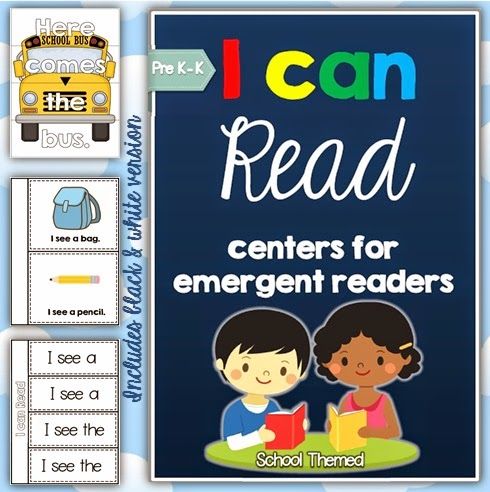 32 841.92] /Contents 186 0 R /group> /Tabs /S /StructParents 62 >> endobj 69 0 obj > /ExtGState> /ProcSet [/PDF /Text /ImageB /ImageC /ImageI] >> /MediaBox[0 0 595.32 841.92] /Contents 187 0 R /group> /Tabs /S /StructParents 63 >> endobj 70 0 obj > /ExtGState> /ProcSet [/PDF /Text /ImageB /ImageC /ImageI] >> /MediaBox [0 0 595.32 841.92] /Contents 188 0 R /group> /Tabs /S /StructParents 64 >> endobj 71 0 obj > /ExtGState> /ProcSet [/PDF /Text /ImageB /ImageC /ImageI] >> /MediaBox [0 0 595.32 841.92] /Contents 189 0 R /group> /Tabs /S /StructParents 65 >> endobj 72 0 obj > /ExtGState> /ProcSet [/PDF /Text /ImageB /ImageC /ImageI] >> /MediaBox[0 0 595.32 841.92] /Contents 190 0R /group> /Tabs /S /StructParents 66 >> endobj 73 0 obj > /ExtGState> /ProcSet [/PDF /Text /ImageB /ImageC /ImageI] >> /MediaBox [0 0 595.32 841.92] /Contents 192 0R /group> /Tabs /S /StructParents 67 >> endobj 74 0 obj > /ExtGState> /ProcSet [/PDF /Text /ImageB /ImageC /ImageI] >> /MediaBox [0 0 595.32 841.92] /Contents 193 0 R /group> /Tabs /S /StructParents 68 >> endobj 75 0 obj > /ExtGState> /ProcSet [/PDF /Text /ImageB /ImageC /ImageI] >> /MediaBox[0 0 595.
32 841.92] /Contents 186 0 R /group> /Tabs /S /StructParents 62 >> endobj 69 0 obj > /ExtGState> /ProcSet [/PDF /Text /ImageB /ImageC /ImageI] >> /MediaBox[0 0 595.32 841.92] /Contents 187 0 R /group> /Tabs /S /StructParents 63 >> endobj 70 0 obj > /ExtGState> /ProcSet [/PDF /Text /ImageB /ImageC /ImageI] >> /MediaBox [0 0 595.32 841.92] /Contents 188 0 R /group> /Tabs /S /StructParents 64 >> endobj 71 0 obj > /ExtGState> /ProcSet [/PDF /Text /ImageB /ImageC /ImageI] >> /MediaBox [0 0 595.32 841.92] /Contents 189 0 R /group> /Tabs /S /StructParents 65 >> endobj 72 0 obj > /ExtGState> /ProcSet [/PDF /Text /ImageB /ImageC /ImageI] >> /MediaBox[0 0 595.32 841.92] /Contents 190 0R /group> /Tabs /S /StructParents 66 >> endobj 73 0 obj > /ExtGState> /ProcSet [/PDF /Text /ImageB /ImageC /ImageI] >> /MediaBox [0 0 595.32 841.92] /Contents 192 0R /group> /Tabs /S /StructParents 67 >> endobj 74 0 obj > /ExtGState> /ProcSet [/PDF /Text /ImageB /ImageC /ImageI] >> /MediaBox [0 0 595.32 841.92] /Contents 193 0 R /group> /Tabs /S /StructParents 68 >> endobj 75 0 obj > /ExtGState> /ProcSet [/PDF /Text /ImageB /ImageC /ImageI] >> /MediaBox[0 0 595.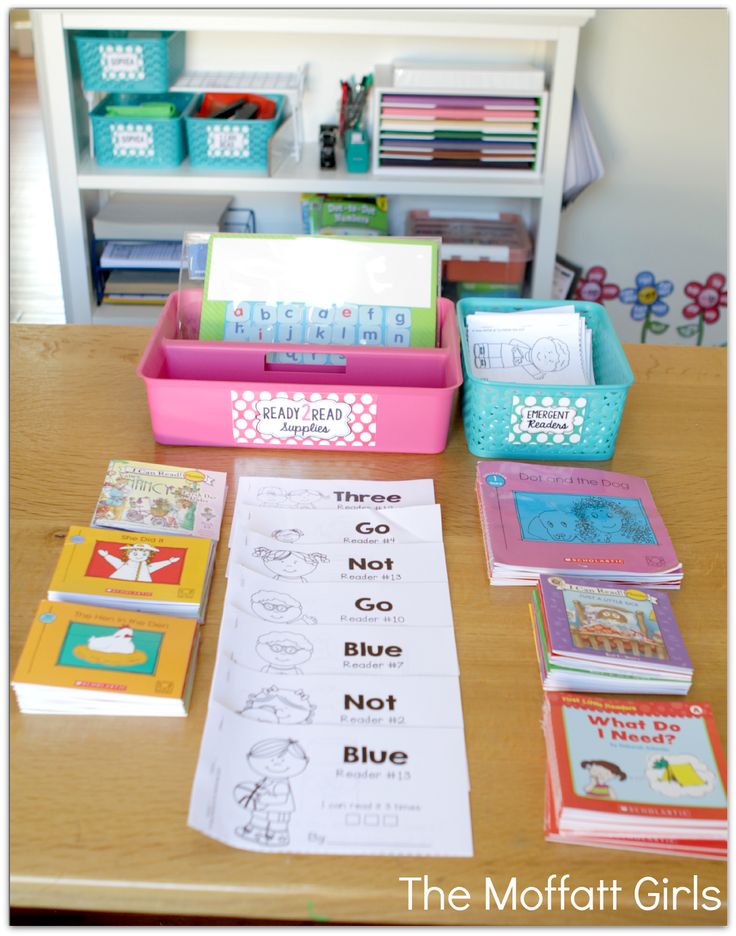 32 841.92] /Contents 194 0 R /group> /Tabs /S /StructParents 69 >> endobj 76 0 obj > /ExtGState> /ProcSet [/PDF /Text /ImageB /ImageC /ImageI] >> /MediaBox [0 0 595.32 841.92] /Contents 195 0 R /group> /Tabs /S /StructParents 70 >> endobj 77 0 obj > /ExtGState> /ProcSet [/PDF /Text /ImageB /ImageC /ImageI] >> /MediaBox [0 0 595.32 841.92] /Contents 196 0 R /group> /Tabs /S /StructParents 71 >> endobj 78 0 obj > /ExtGState> /ProcSet [/PDF /Text /ImageB /ImageC /ImageI] >> /MediaBox[0 0 595.32 841.92] /Contents 197 0 R /group> /Tabs /S /StructParents 72 >> endobj 79 0 obj > /ExtGState> /ProcSet [/PDF /Text /ImageB /ImageC /ImageI] >> /MediaBox [0 0 595.32 841.92] /Contents 198 0 R /group> /Tabs /S /StructParents 73 >> endobj 80 0 obj > /ExtGState> /ProcSet [/PDF /Text /ImageB /ImageC /ImageI] >> /MediaBox [0 0 595.32 841.92] /Contents 199 0 R /group> /Tabs /S /StructParents 74 >> endobj 81 0 obj > /ExtGState> /ProcSet [/PDF /Text /ImageB /ImageC /ImageI] >> /MediaBox[0 0 595.32 841.92] /Contents 200 0R /group> /Tabs /S /StructParents 75 >> endobj 82 0 obj > /ExtGState> /ProcSet [/PDF /Text /ImageB /ImageC /ImageI] >> /MediaBox [0 0 595.
32 841.92] /Contents 194 0 R /group> /Tabs /S /StructParents 69 >> endobj 76 0 obj > /ExtGState> /ProcSet [/PDF /Text /ImageB /ImageC /ImageI] >> /MediaBox [0 0 595.32 841.92] /Contents 195 0 R /group> /Tabs /S /StructParents 70 >> endobj 77 0 obj > /ExtGState> /ProcSet [/PDF /Text /ImageB /ImageC /ImageI] >> /MediaBox [0 0 595.32 841.92] /Contents 196 0 R /group> /Tabs /S /StructParents 71 >> endobj 78 0 obj > /ExtGState> /ProcSet [/PDF /Text /ImageB /ImageC /ImageI] >> /MediaBox[0 0 595.32 841.92] /Contents 197 0 R /group> /Tabs /S /StructParents 72 >> endobj 79 0 obj > /ExtGState> /ProcSet [/PDF /Text /ImageB /ImageC /ImageI] >> /MediaBox [0 0 595.32 841.92] /Contents 198 0 R /group> /Tabs /S /StructParents 73 >> endobj 80 0 obj > /ExtGState> /ProcSet [/PDF /Text /ImageB /ImageC /ImageI] >> /MediaBox [0 0 595.32 841.92] /Contents 199 0 R /group> /Tabs /S /StructParents 74 >> endobj 81 0 obj > /ExtGState> /ProcSet [/PDF /Text /ImageB /ImageC /ImageI] >> /MediaBox[0 0 595.32 841.92] /Contents 200 0R /group> /Tabs /S /StructParents 75 >> endobj 82 0 obj > /ExtGState> /ProcSet [/PDF /Text /ImageB /ImageC /ImageI] >> /MediaBox [0 0 595.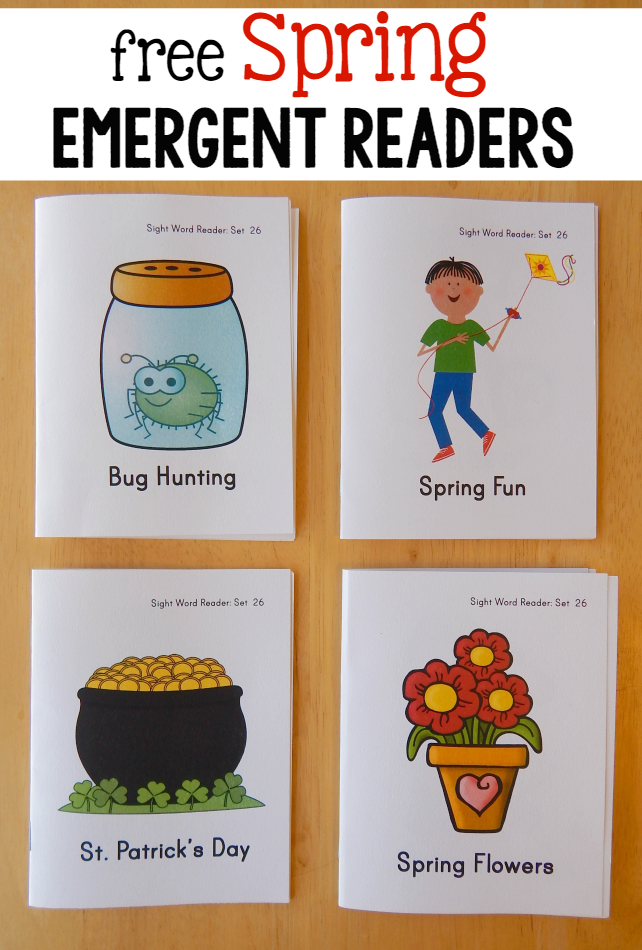 32 841.92] /Contents 201 0 R /group> /Tabs /S /StructParents 76 >> endobj 83 0 obj > /ExtGState> /ProcSet [/PDF /Text /ImageB /ImageC /ImageI] >> /MediaBox [0 0 595.32 841.92] /Contents 202 0 R /group> /Tabs /S /StructParents 77 >> endobj 84 0 obj > /ExtGState> /ProcSet [/PDF /Text /ImageB /ImageC /ImageI] >> /MediaBox[0 0 595.32 841.92] /Contents 203 0 R /group> /Tabs /S /StructParents 78 >> endobj 85 0 obj > /ExtGState> /ProcSet [/PDF /Text /ImageB /ImageC /ImageI] >> /MediaBox [0 0 595.32 841.92] /Contents 204 0 R /group> /Tabs /S /StructParents 79 >> endobj 86 0 obj > /ExtGState> /ProcSet [/PDF /Text /ImageB /ImageC /ImageI] >> /MediaBox [0 0 595.32 841.92] /Contents 205 0 R /group> /Tabs /S /StructParents 80 >> endobj 87 0 obj > /ExtGState> /ProcSet [/PDF /Text /ImageB /ImageC /ImageI] >> /MediaBox[0 0 595.32 841.92] /Contents 208 0 R /group> /Tabs /S /StructParents 81 >> endobj 88 0 obj > /ExtGState> /ProcSet [/PDF /Text /ImageB /ImageC /ImageI] >> /MediaBox [0 0 595.32 841.92] /Contents 211 0 R /group> /Tabs /S /StructParents 82 >> endobj 89 0 obj > /ExtGState> /ProcSet [/PDF /Text /ImageB /ImageC /ImageI] >> /MediaBox [0 0 595.
32 841.92] /Contents 201 0 R /group> /Tabs /S /StructParents 76 >> endobj 83 0 obj > /ExtGState> /ProcSet [/PDF /Text /ImageB /ImageC /ImageI] >> /MediaBox [0 0 595.32 841.92] /Contents 202 0 R /group> /Tabs /S /StructParents 77 >> endobj 84 0 obj > /ExtGState> /ProcSet [/PDF /Text /ImageB /ImageC /ImageI] >> /MediaBox[0 0 595.32 841.92] /Contents 203 0 R /group> /Tabs /S /StructParents 78 >> endobj 85 0 obj > /ExtGState> /ProcSet [/PDF /Text /ImageB /ImageC /ImageI] >> /MediaBox [0 0 595.32 841.92] /Contents 204 0 R /group> /Tabs /S /StructParents 79 >> endobj 86 0 obj > /ExtGState> /ProcSet [/PDF /Text /ImageB /ImageC /ImageI] >> /MediaBox [0 0 595.32 841.92] /Contents 205 0 R /group> /Tabs /S /StructParents 80 >> endobj 87 0 obj > /ExtGState> /ProcSet [/PDF /Text /ImageB /ImageC /ImageI] >> /MediaBox[0 0 595.32 841.92] /Contents 208 0 R /group> /Tabs /S /StructParents 81 >> endobj 88 0 obj > /ExtGState> /ProcSet [/PDF /Text /ImageB /ImageC /ImageI] >> /MediaBox [0 0 595.32 841.92] /Contents 211 0 R /group> /Tabs /S /StructParents 82 >> endobj 89 0 obj > /ExtGState> /ProcSet [/PDF /Text /ImageB /ImageC /ImageI] >> /MediaBox [0 0 595. 32 841.92] /Contents 212 0 R /group> /Tabs /S /StructParents 83 >> endobj 90 0 obj > /ExtGState> /ProcSet [/PDF /Text /ImageB /ImageC /ImageI] >> /MediaBox[0 0 595.32 841.92] /Contents 213 0R /group> /Tabs /S /StructParents 84 >> endobj 91 0 obj > /ExtGState> /ProcSet [/PDF /Text /ImageB /ImageC /ImageI] >> /MediaBox [0 0 595.32 841.92] /Contents 214 0R /group> /Tabs /S /StructParents 85 >> endobj 92 0 obj > /ExtGState> /ProcSet [/PDF /Text /ImageB /ImageC /ImageI] >> /MediaBox [0 0 595.32 841.92] /Contents 215 0 R /group> /Tabs /S /StructParents 86 >> endobj 93 0 obj > /ExtGState> /ProcSet [/PDF /Text /ImageB /ImageC /ImageI] >> /MediaBox[0 0 595.32 841.92] /Contents 216 0R /group> /Tabs /S /StructParents 87 >> endobj 94 0 obj > /ExtGState> /ProcSet [/PDF /Text /ImageB /ImageC /ImageI] >> /MediaBox [0 0 595.32 841.92] /Contents 217 0R /group> /Tabs /S /StructParents 88 >> endobj 95 0 obj > /ExtGState> /ProcSet [/PDF /Text /ImageB /ImageC /ImageI] >> /MediaBox [0 0 595.32 841.92] /Contents 218 0 R /group> /Tabs /S /StructParents 89 >> endobj 96 0 obj > /ExtGState> /ProcSet [/PDF /Text /ImageB /ImageC /ImageI] >> /MediaBox[0 0 595.
32 841.92] /Contents 212 0 R /group> /Tabs /S /StructParents 83 >> endobj 90 0 obj > /ExtGState> /ProcSet [/PDF /Text /ImageB /ImageC /ImageI] >> /MediaBox[0 0 595.32 841.92] /Contents 213 0R /group> /Tabs /S /StructParents 84 >> endobj 91 0 obj > /ExtGState> /ProcSet [/PDF /Text /ImageB /ImageC /ImageI] >> /MediaBox [0 0 595.32 841.92] /Contents 214 0R /group> /Tabs /S /StructParents 85 >> endobj 92 0 obj > /ExtGState> /ProcSet [/PDF /Text /ImageB /ImageC /ImageI] >> /MediaBox [0 0 595.32 841.92] /Contents 215 0 R /group> /Tabs /S /StructParents 86 >> endobj 93 0 obj > /ExtGState> /ProcSet [/PDF /Text /ImageB /ImageC /ImageI] >> /MediaBox[0 0 595.32 841.92] /Contents 216 0R /group> /Tabs /S /StructParents 87 >> endobj 94 0 obj > /ExtGState> /ProcSet [/PDF /Text /ImageB /ImageC /ImageI] >> /MediaBox [0 0 595.32 841.92] /Contents 217 0R /group> /Tabs /S /StructParents 88 >> endobj 95 0 obj > /ExtGState> /ProcSet [/PDF /Text /ImageB /ImageC /ImageI] >> /MediaBox [0 0 595.32 841.92] /Contents 218 0 R /group> /Tabs /S /StructParents 89 >> endobj 96 0 obj > /ExtGState> /ProcSet [/PDF /Text /ImageB /ImageC /ImageI] >> /MediaBox[0 0 595. 32 841.92] /Contents 219 0 R /group> /Tabs /S /StructParents 90 >> endobj 97 0 obj > /ExtGState> /ProcSet [/PDF /Text /ImageB /ImageC /ImageI] >> /MediaBox [0 0 595.32 841.92] /Contents 220 0R /group> /Tabs /S /StructParents 91 >> endobj 98 0 obj > /ExtGState> /ProcSet [/PDF /Text /ImageB /ImageC /ImageI] >> /MediaBox [0 0 595.32 841.92] /Contents 221 0R /group> /Tabs /S /StructParents 92 >> endobj 99 0 obj > /ExtGState> /ProcSet [/PDF /Text /ImageB /ImageC /ImageI] >> /MediaBox[0 0 595.32 841.92] /Contents 222 0R /group> /Tabs /S /StructParents 93 >> endobj 100 0 obj > /ExtGState> /ProcSet [/PDF /Text /ImageB /ImageC /ImageI] >> /MediaBox [0 0 595.32 841.92] /Contents 223 0R /group> /Tabs /S /StructParents 94 >> endobj 101 0 obj > /ExtGState> /XObject> /ProcSet [/PDF /Text /ImageB /ImageC /ImageI] >> /MediaBox [0 0 595.32 841.92] /Contents 225 0 R /group> /Tabs /S /StructParents 95 >> endobj 102 0 obj > /ExtGState> /XObject> /ProcSet [/PDF /Text /ImageB /ImageC /ImageI] >> /MediaBox[0 0 595.
32 841.92] /Contents 219 0 R /group> /Tabs /S /StructParents 90 >> endobj 97 0 obj > /ExtGState> /ProcSet [/PDF /Text /ImageB /ImageC /ImageI] >> /MediaBox [0 0 595.32 841.92] /Contents 220 0R /group> /Tabs /S /StructParents 91 >> endobj 98 0 obj > /ExtGState> /ProcSet [/PDF /Text /ImageB /ImageC /ImageI] >> /MediaBox [0 0 595.32 841.92] /Contents 221 0R /group> /Tabs /S /StructParents 92 >> endobj 99 0 obj > /ExtGState> /ProcSet [/PDF /Text /ImageB /ImageC /ImageI] >> /MediaBox[0 0 595.32 841.92] /Contents 222 0R /group> /Tabs /S /StructParents 93 >> endobj 100 0 obj > /ExtGState> /ProcSet [/PDF /Text /ImageB /ImageC /ImageI] >> /MediaBox [0 0 595.32 841.92] /Contents 223 0R /group> /Tabs /S /StructParents 94 >> endobj 101 0 obj > /ExtGState> /XObject> /ProcSet [/PDF /Text /ImageB /ImageC /ImageI] >> /MediaBox [0 0 595.32 841.92] /Contents 225 0 R /group> /Tabs /S /StructParents 95 >> endobj 102 0 obj > /ExtGState> /XObject> /ProcSet [/PDF /Text /ImageB /ImageC /ImageI] >> /MediaBox[0 0 595.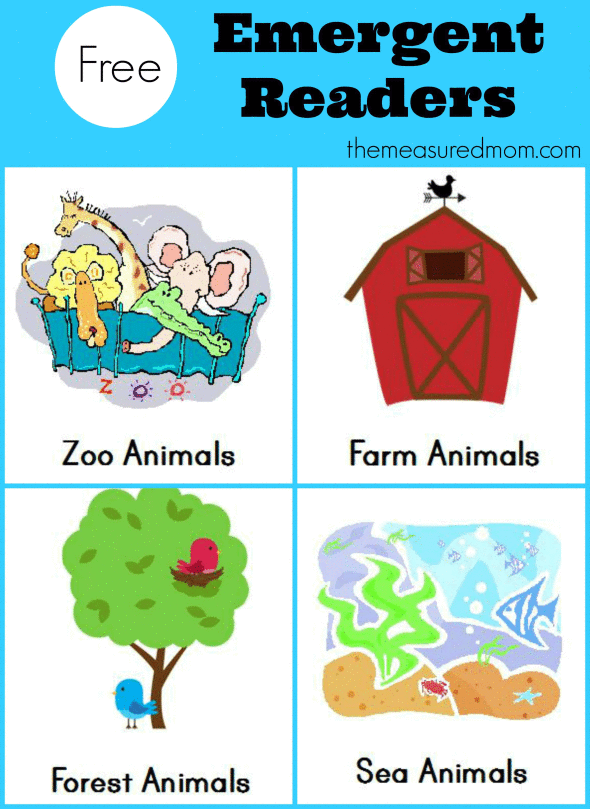 32 841.92] /Contents 227 0 R /group> /Tabs /S /StructParents 96 >> endobj 103 0 obj > endobj 104 0 obj > endobj 105 0 obj > endobj 106 0 obj > endobj 107 0 obj > endobj 108 0 obj > endobj 109 0 obj > endobj 110 0 obj > endobj 111 0 obj > endobj 112 0 obj > endobj 113 0 obj > endobj 114 0 obj > endobj 115 0 obj > endobj 116 0 obj > stream x
32 841.92] /Contents 227 0 R /group> /Tabs /S /StructParents 96 >> endobj 103 0 obj > endobj 104 0 obj > endobj 105 0 obj > endobj 106 0 obj > endobj 107 0 obj > endobj 108 0 obj > endobj 109 0 obj > endobj 110 0 obj > endobj 111 0 obj > endobj 112 0 obj > endobj 113 0 obj > endobj 114 0 obj > endobj 115 0 obj > endobj 116 0 obj > stream x Top 20 articles | Interactive education
| Zaripova Galia Mnaurovna Many traditions that pass from generation to generation change over time, sometimes, sadly, they are forgotten. It seems to me that it is very important to remember the customs and traditions of your ancestors. I want to share a story about how I learned about one of the interesting and unusual, in my opinion, national Kazakh traditions. | |
| Shilkova Marina Sergeevna Purpose: updating and expanding the existing knowledge of children on the emergence and spread of writing and the emergence of book printing. | |
| Shilkova Marina Sergeevna Purpose: Updating and expanding the existing knowledge of children on the history of the Great Patriotic War. Tasks: To expand students' knowledge and understanding of the history of the Second World War. | |
| Mareeva Olga Mikhailovna Purpose: repetition and generalization of lexical and grammatical material on the topic "Weather and seasons"; development of communicative competence in a foreign language lesson. | |
| Churkina Lyubov Gennadievna Mastering the mother tongue is one of the important acquisitions of a child in preschool childhood. It is acquisitions, since speech is not given to a person from birth. Time must pass for the child to begin to speak, and adults must make a lot of efforts so that the child's speech develops correctly and in a timely manner. The main task of any preschool educational institution is the speech development of preschoolers according to the Federal State Educational Standard. Thanks to him, the initial formation of the child's communication skills, the formation of the correct conversation and thinking takes place. | |
| Vakhrusheva Galina Petrovna Modern society makes new demands on students. The “knowledgeable graduate” ceased to meet the demands of society. | |
| Kulikova Irina Gennadievna Let's ask ourselves a question: what are modern education and science in the context of the formation of a person's personality, his constant development and understanding of the world around him? | |
| Shatalova Natalya Petrovna, Gerber Yulia Nikolaevna Russia… a provincial town… a school with traditions… gullible teachers… inquisitive children… – this is the center of our entire Universe. | |
| Bocherova Arina Yurievna, Tkachenko Olesya Nikolaevna What is education? It includes not only education, but also education and upbringing. The main directions of education, although being developed in scientific and theoretical terms, are still poorly implemented in practice. As the scientist V. Andrushchenko notes: “We must arrange the educational process in such a way that it unfolds on the edge of the most complete acquisitions of modern science, culture and has a leading character, forms creative thinking, volitional abilities of the individual. | |
| Savunova Irina Yuryevna Drawing for a child is a joyful and exciting activity that should not be forced, but it is very important to stimulate, open up new possibilities for fine art. | |
| Eremina Elena Gennadievna The memory of the Great Patriotic War, which has become a distant history for our generation, is not only a chronicle, annals and diaries, it is its historical lessons that have absorbed the social experience of the past and the aspiration to the present and future. | |
| Shamikaeva Anna Sergeevna A graduate of a pedagogical university or college, having come to work at school, begins to apply in his daily work the knowledge and practical skills acquired during the training of the profession. The process of self-realization in the pedagogical sphere begins with adaptation to work in an educational organization. Often, novice teachers face certain difficulties on the basis of emerging contradictions. We will talk about the most common contradictions faced by young teachers who applied to the psychological and pedagogical service of the gymnasium. | |
| Grishulina Oksana Evgenievna The problem of a child's adaptation to the conditions of a kindergarten arose from the very beginning of the existence of preschool institutions and continues to be relevant in our time. Adaptation comes from the Latin "adaptation", adaptation. Traditionally, adaptation is understood as the process of a person entering a new environment for him and adapting to its conditions. For a child, kindergarten is undoubtedly such a new environment, with a new environment and new relationships. | |
| Olga Viktorovna Bolobkova Today, a new system of preschool education is being established in society. On September 1, 2013, a new law “On Education in the Russian Federation” came into force, in which for the first time preschool education is defined as one of the levels of general education, which made it necessary to develop and approve the federal state educational standard (FSES) of preschool education, which entered into force January 1, 2014 | |
| Vaganov Anatoly Stepanovich Oh, youth! Beautiful time! Each of us, who has long or recently stepped over his youthful days, can say so, but for each generation they are unique, because time has left its mark on them. | |
| Tsirina Tatyana Anatolyevna Objectives: to form an idea of the correct posture, to identify the causes of postural disorders, to give recommendations for the prevention of postural disorders. | |
| Chernikova Oksana Mikhailovna The approval of the state educational standards of the second generation placed new requirements on teachers to achieve the goals of the educational process that meet the needs of modern society. The main task of school education is to provide students with the opportunity to independently set and implement educational goals, evaluate their achievements. | |
| Marina Sergeevna Shilkova We hear and speak the word “example” very often in life. What is the meaning of this concept? The very word "example" is ambiguous: 1. This is also a case that can be given as an explanation, as a proof of something. 2. And the action that is imitated, as well as the action as an outstanding example of something. 3. A math exercise that requires some manipulation of numbers. | |
| Samoilo Liliya Nikolaevna In the modern Russian community there is a tendency to increase the unity of citizens, the task associated with the formation of cultural competencies, knowledge about other peoples and their traditions is being updated. The inclusion of a person, as a representative of the people, in the greater community of the country meets the national interests of the Russian state. | |
| Krasikova Irina Vladimirovna Class hour goals: 1. To form an idea of Russia and its symbols. 2. To cultivate a sense of pride, patriotism, love and devotion to the native country. | |
| Prokop'eva Larisa Veniaminovna, Sukhorukova Elena Arkhipovna Modern preschool institutions are looking for new humanistic, student-centered approaches to education. Therefore, today many teachers are concerned about finding non-traditional ways in interacting with children, while solving a number of important issues: | |
| Kononova Olga Anatolyevna "Have you ever thought how good it would be to start creating a children's theater from childhood?" - reflected on the age characteristics of theatrical art K.S. Stanislavsky. He was convinced that every child has the instinct to play with reincarnation: “This passion to reincarnate in many children sounds bright, talented, and sometimes causes bewilderment even among us, professional artists. | |
| Antropova Elena Anatolyevna Mathematics in primary school is the main subject. Younger students learn the system of the most important mathematical concepts, master the skills and abilities in the field of counting, writing, speech, without which successful schooling is impossible. The educational value of mathematics is great: it opens didactic games of an entertaining nature to younger students. |

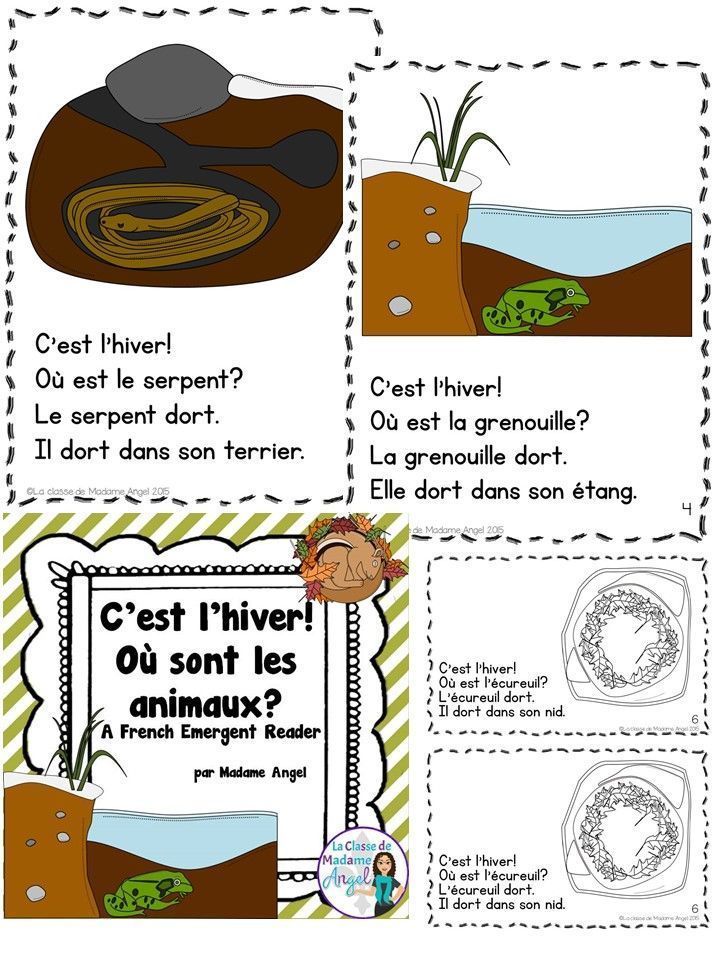
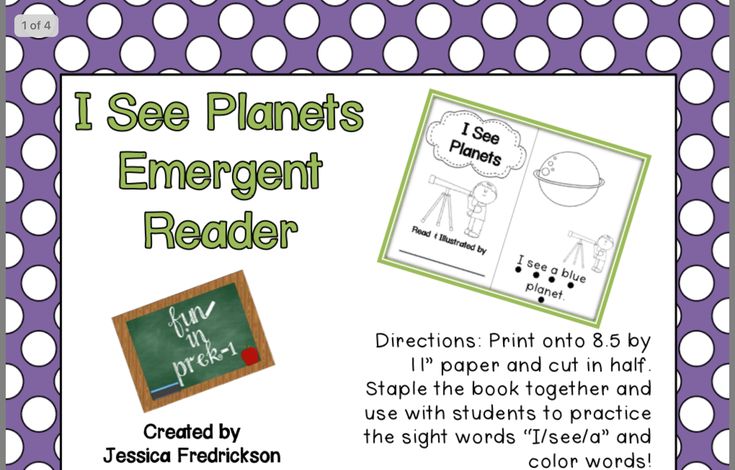
 Today, the demand is for a “skillful, creative graduate”, who has value orientations. The teaching staff, which must be a professional in their field, is called upon to solve this problem. But if the level of professionalism of teachers does not meet modern requirements, one can hardly count on a high educational result that meets the needs of society and the state.
Today, the demand is for a “skillful, creative graduate”, who has value orientations. The teaching staff, which must be a professional in their field, is called upon to solve this problem. But if the level of professionalism of teachers does not meet modern requirements, one can hardly count on a high educational result that meets the needs of society and the state. 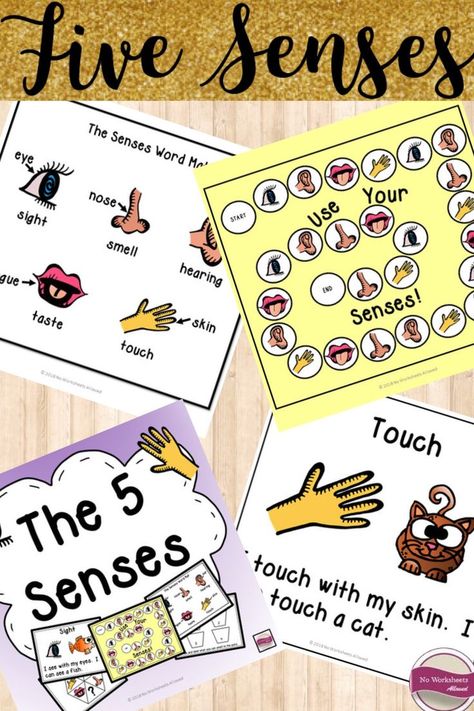 It is here that the most intimate of our Fatherland is kept - originality, history, nature. All this wealth is the meaning of life, which the younger generation must absorb. Children can realize their great purpose only in the process of self-knowledge, self-development, self-esteem, and next to them there should be a friend and mentor - the Teacher.
It is here that the most intimate of our Fatherland is kept - originality, history, nature. All this wealth is the meaning of life, which the younger generation must absorb. Children can realize their great purpose only in the process of self-knowledge, self-development, self-esteem, and next to them there should be a friend and mentor - the Teacher. 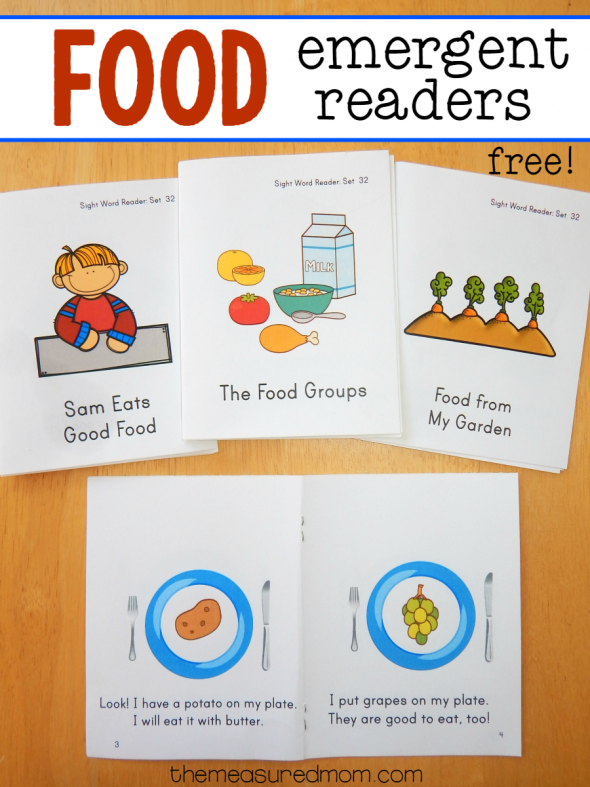 ”
” 
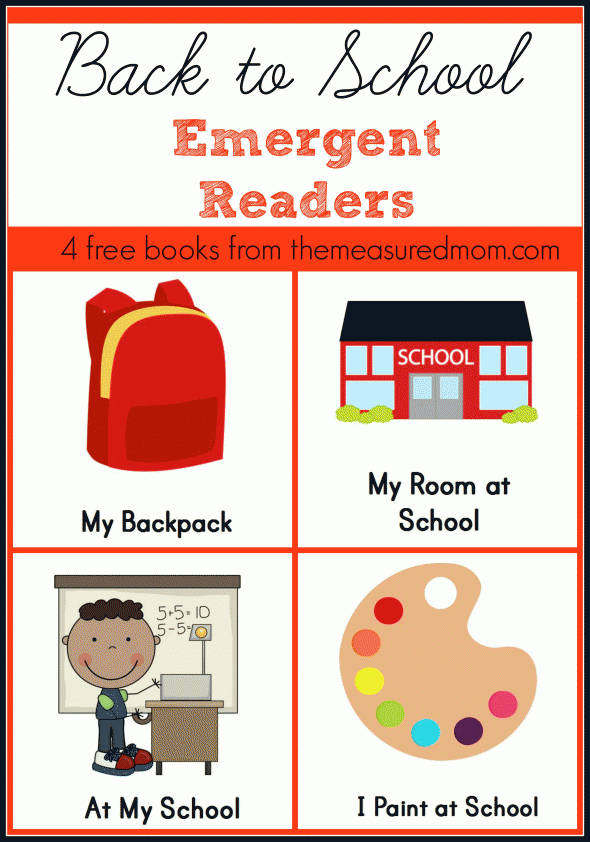
 For some, this is a revolution, the war years, virgin lands, BAM, perestroika ...
For some, this is a revolution, the war years, virgin lands, BAM, perestroika ... 